
















It’s baseball season. Time to talk about the national pastime, the Phillies, and their quest to get back to the World Series. Right?
Nah. We will have time for that later. I want to talk about Jason Kelce.
The best center in Eagles’ history retired recently. And he did it in Kelce style.
By style, I mean a cut-off workout shirt and flip-flops.
It wasn’t a Mummers outfit, but it was the next best thing. That is who he is, an everyman who would be a voracious fan if he wasn’t a star player.
He gulped for air as he tried to get out his message to his family, friends, teammates, scribes, and adoring fans.
The tears were heavy, huge droplets splashing all over the desk in front of him. He was offered tissues to mop his face, but a small hand towel was more appropriate to clean up the flood of emotion that accompanies 13 years of service.
He mentioned the Eagles fans and how special they are… IF you play with emotion and let them know that you care as much as they do. The “for who, for what thing” doesn’t play well here. Aaron Rowand smashing his face into the center field fence is the effort that we appreciate.
When the Eagles finished their season in a tailspin, it wasn’t the lack of results that prompted the backlash, it was the perceived lack of effort as the team continued to whiff on tackles and watch their pass rush disappear.
Thirteen years is a long time in the trenches, and Jason Kelce deserved to call it a career on his terms.
You will probably see him on television next season, and of course, the podcast with his brother Travis isn’t going anywhere soon.
But it wouldn’t shock me if he discarded conventional wisdom and toiled in the system as a coach, working the long, hard hours it takes to get the most out of today’s athletes.
One final note, his long-time trainer is battling cancer, and was not able to tape his ankles for the last game at Tampa. So Jason had him do the job one last time before the retirement speech.
When I heard this, I fell in love all over again.
Kelce style. A little sloppy, but very sincere.
Today’s politicians are masters of the flip-flop.
But they don’t wear them nearly as well as number 62.
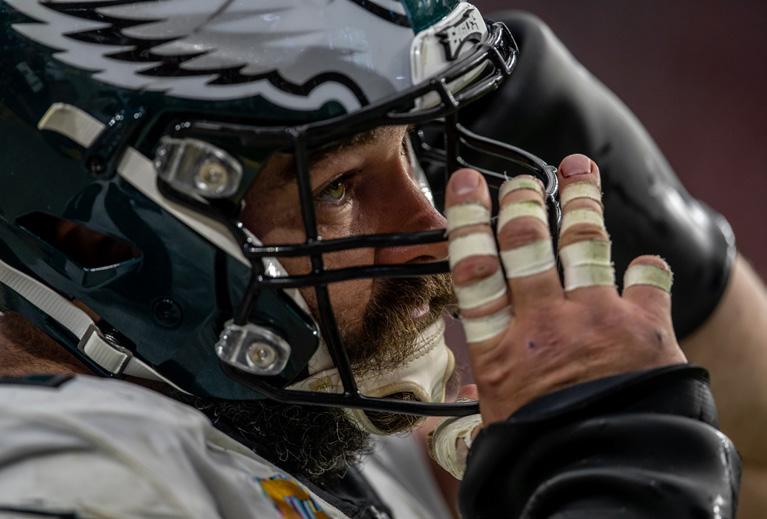
Ken Dunek PUBLISHER
ASSOCIATE PUBLISHER
Ashley Dunek
EDITOR
George Brinkerhoff
ART DIRECTOR
Steve Iannarelli
CONTRIBUTING WRITERS
George Anastasia, Michael Bradley, George Brinkerhoff, Sam Carchidi, Alexandra Dunek, Mark Eckel, Allison Farcus, Sam Kraft, Dei Lynam, Anthony Mongeluzo, Kevin Reilly, Mike Shute, Kurt Smith
Event Coordinator & Administrative Assistant
Alexandra Dunek
Website & Digital Coordinator
Jamie Dunek
Editorial gbrinkerhoff@jerseymanmagazine.com
Advertising 856-912-4007
Printing Alcom Printing, Harleysville, Pa.
Controller
Rose M. Balcavage
Sales Associates
Ashley Dunek, Jamie Dunek, Terri Dunek, Allison Farcus, JP Lutz
Intern
Laurie Walsh
JerseyMan/PhillyMan Advisory Board
Peter Cordua (Chairman) Cordua Consulting, LLC
Don Eichman Alcom Printing
Bill Emerson Emerson Group
Jerry Flanagan .............................. J Dog Brands
Damien Ghee ..................................... TD Bank
Bob Hoey Janney Montgomery Scott
Kristi Howell Burlington Co. Chamber of Commerce
Ed Hutchinson Hutchinson
Robert Kennedy Waterworks Metrology
Anthony Mongeluzo PCS
Charlie Muracco CLM Advisors
Ryan Regina Big Sky Enterprises
Scott Tanker ....................Tanker Business Solutions
Joe Tredinnick .......................... Cornerstone Bank
Les Vail Workplace HCM
Jim Wujcik The Joseph Fund
“To succeed in baseball, as in life, you must make adjustments.”
– Ken Griffey Jr.



“You either get better, or you get worse. Those are the only two options.”
– Max Scherzer

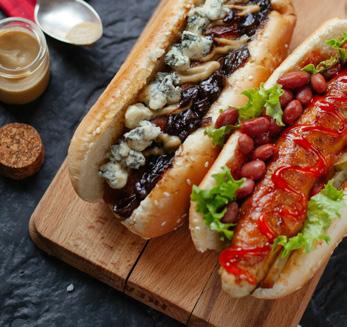




 BY GEORGE BRINKERHOFF
BY GEORGE BRINKERHOFF
“I believe we have a personal obligation to make the most of the abilities we have.”
– Jim Abbott

AS REPORTED in Sports Illustrated and elsewhere, Michael Jordan’s Jordan Brand, along with Nike, have submitted plans for opening another of the basketball legend and business entrepreneur’s “World of Flight” stores in the City of Brotherly Love, at 1617 Walnut Street. This establishment in Philly will be his fourth personally branded retail space in the world, behind the likes of Italy, Japan and Dubai, and his first in North America. According to the application sent to the Philadelphia Historical Commission, “Philadelphia’s Jordan The World of Flight will deliver a timeless, thoughtfully designed store that can contribute to the neighborhood and character of the streetscape. The clean design language paired with the materiality and details used throughout achieves a look/feel that will convey a sense of history and permanence.” Moreover, their submission indicated that the concept for this store, located in a building erected in 1921, will be “the intersection of Philadelphia Historical Architecture and the Jordan Brand.” Sounds great. Just do it.

It just so happens that everyone’s favorite former Philadelphia Phillies all-star shortstop, and our very own JerseyMan cover story subject for this issue, Jimmy Rollins, will be opening a new restaurant in Philadelphia this summer.
As reported by the Philadelphia Inquirer, J-Roll’s new establishment, Eleven Social, which is named for Rollins’ uniform number as a member of the Phillies, will be located at 117 Chestnut St. in Old City.
Despite being the location of the former 2nd Story Brewing Co. (because they’re outta here!) and using the old brewpub’s beer making equipment to make Jimmy’s own branded beer, it will neither be themed a brewpub nor a sports bar. In fact, Jimmy Rollins’ friend and business partner in the venture (and a former High School baseball rival), Matt Delima, who became a restaurateur in the Bay Area of California, very aptly indicated just what Eleven Social will be. “Basically, it will be a good place for a social gathering with good food.” Which to that I say, “Woohoo! Everybody hits!”
Another uniquely Philadelphian restaurant is coming later this year at Broad Street and Packer Avenue to South Philly. Standing in front of and gesturing at the old Talk of the Town/Ace of Steaks cheesesteak place, located right down the street from the sports stadiums, none other than Philly’s newest entrepreneur Joseph “Skinny Joey” Merlino shared the exciting announcement personally with a video on X. He’s opening a new cheesesteak place! “We’re starting construction today. We’re going to gut it. Fix it. It’s going to be the cleanest, best cheesesteak place in the city.” He went on to indicate that, “If you’re going to any sporting events, Flyers, Sixers, Phillies, concerts, Eagles come by here, stop and see me. I’ll be behind the grill making steaks.” He summed up his announcement indicating, “It’s going to be the best in the city, believe me.” He then pointed at the old building again and said, “This is the before. Wait ‘til you see it in a couple of months. You won’t even recognize it.”




BALD EAGLES IN NEW JERSEY continue to be on the rebound. According to New Jersey Conservation Foundation, when the state first started keeping records of nesting pairs in the 1950s, at least 20 were located in the Delaware Bay region. That number would plummet to only one breeding pair, in Cumberland County, by the 1970s due to the widespread use of the pesticide DDT which impacted the eagles’ eggshells, leaving them thin and frail. And though the chemical had been banned in New Jersey as early as 1968 and nationally in 1972, the residual eggshell thinning effects continued. In 1982 after that last breeding pair’s eggshells cracked for the 6th year in a row, biologists from the New Jersey Department of Environmental Protection’s (NJDEP) Endangered and Nongame Species Program (ENSP) removed the final egg from the nest and incubated it artificially, then returned the hatchling. That artificial incubation process continued every year until 1989, when a younger female took over the nest and the pair was able to successfully hatch their young naturally again. At the same time, the biologists determined that they needed to increase the odds of survival beyond that one nest alone and so, in 1983, began releasing younger eagles from Canada into the state, ultimately releasing 60 birds in an 8-year period. The numbers of active eagles’ nests began to take off, from just 4 in 1990 to 23 in 2000; up to 82 in 2010 and 150 in 2015 then 220 in 2020. As of 2023, the New Jersey statewide bald eagle breeding program counted 286 territorial pairs with 255 active nests producing 309 chicks, and eagles’ nests were found in all 21 counties!
Source: njconservation.org, Hope soars as NJ’s bald eagle population grows, Alison Mitchell, 2/15/2024

Chairman’s


Chairman’s Club at the Sixers game courtesy of Rob Curley of TD Bank

Referral Partner Party at TopGolf, Mount Laurel, NJ. Hala & Michael Barson won the Tourneau watch giveaway.
Thank you to Mike Chapman of Torneau.

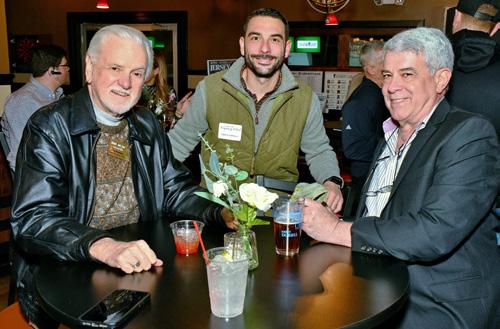

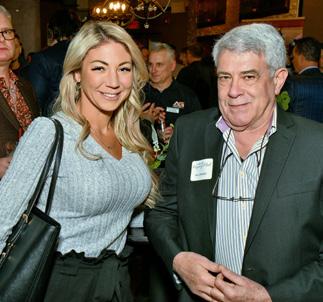
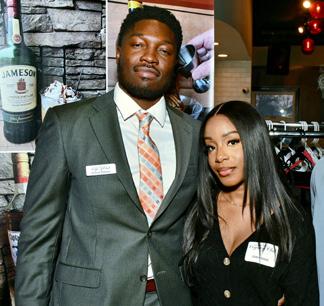

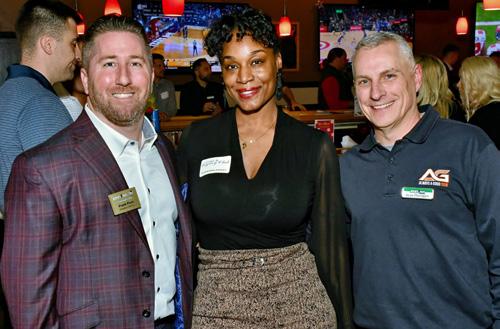


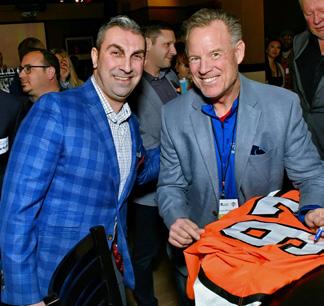
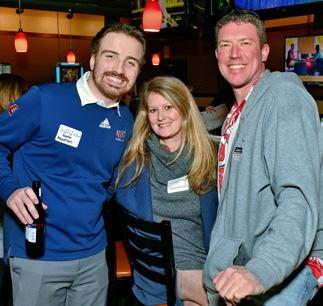





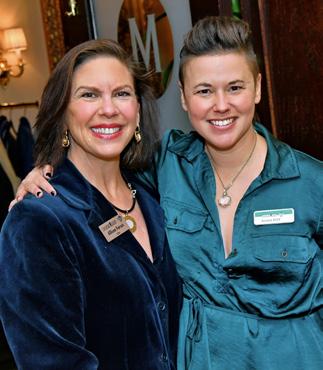


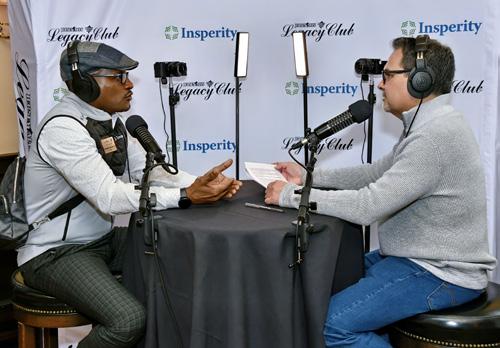





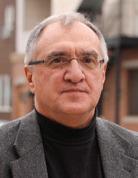
he compares Benjamin “Bugsy” Siegel to Alexander the Great or Marc Anthony chasing after Cleopatra.
Lucky Luciano, deported to Italy and plotting his return to the United States, was like Napoleon at Elba.
Vito Genovese, first in bed with Mussolini and then a translator for the Allies following the invasion of Sicily, was a modern-day Alcibiades, the fourth-century BC Greek statesman who constantly shifted his allegiance.
This is Louis Ferrante writing about the early days of organized crime in “Borgata: Rise of Empire, A History of the American Mafia.” It‘s a fascinating first volume of what is billed as “The Borgata Trilogy.”
Smoothly written and impeccably researched, it traces the Mafia from Sicily to the United States at the turn of the last century, includes an important stop in New Orleans, and focuses on the major gangsters – primarily Jewish and Italian – who created what we now know as Cosa Nostra. (Borgata was the term they used for a crime family.) It is a serious, historical look at organized crime written not by an academician or a journalist, but by someone who lived the life. His insights are often personal and always informative.
One example is his take when writing about Luciano, who lived at the posh Waldorf Towers but had been sentenced to prison at Clinton Correctional Facility [sometimes referred to as Dannemora, as it served as a mental hospital known as Dannemora Hospital for the Criminally Insane] after his conviction for running a prostitution ring.
“I have stayed at the Waldorf Towers and I have lived under the gun towers at Clinton,” Ferrante writes, “so I can speak to the contrast; it is like exiting your luxurious suite and stepping into an empty elevator shaft that drops you into the Ninth Circle of Dante’s Inferno.”
Another is this comment about an erroneous but long-held belief about the motive for the 1974 bombing of Frank Costello’s marble mausoleum: “Here, again, we see history written and repeated by people who have no idea what they are talking about.”
The conventional wisdom had been that the bombing was an underworld show of disrespect toward Costello. In fact, Ferrante who said he knew one of the bombers, writes it was carried out by a crew of mobsters who “figured, at the very least, his skeletal hand would be adorned with one of his many solid-gold wristwatches and pinky rings.”
Ferrante notes that gold had a value of $180 an ounce at the time of the bombing, more than three times what it was worth at the time of Costello’s burial two years earlier.
Ferrante’s bona fides are as good as or better than anyone offering up insights and anecdotes about “the life” on social media today. New York-born and raised, he turned to a life
game-changer. He began to read….and read…. and read. That was how he survived life in the penitentiary at Lewisburg and how he became a self-educated and savvy commentator on a wide range of topics.
SINCE HIS RELEASE in 2003, he has written several books and appeared on and produced documentaries. “Borgata Rise of Empire” may be his most ambitious project. The first volume ends in the late 1950s and teases what figures to be a major part of volume two – the mob and the Kennedys.
What volume one offers is a detailed account of the life and times of the major figures who created the American underworld. Arnold Rothstein, Meyer Lansky, Al Capone, Luciano, Costello, Genovese, and Siegel all have their turn center stage. But the description of who they were and what they did is sometimes at odds with the conventional and, Ferrante would argue, the distorted image that has been
He began to read…and read…and read. That was how he survived life in the penitentiary at Lewisburg and how he became a selfeducated and savvy commentator on a wide range of topics.
of crime as a teenager and rose through the ranks of the Gambino crime family, eventually heading a gang of stick-up artists who turned hijacking into a major money maker for the organization.
He refused to cooperate after being arrested and did more than eight years following a series of convictions in the late 1990s. He readily acknowledges that his time in prison was a

replicated in books, movies and newspaper accounts of their lives.
Luciano, for example, owed much of his success and perhaps his life to Lansky who went out of his way to burnish the image of the emerging Mafioso after Lucky had cooperated with investigators following one of his first drug busts. Throughout his life, Ferrante notes, Lucky was only a sometimes advocate
of omerta.
Frank Costello, the “prime minister” of the mob, was a whiner and weak leader who, long before Tony Soprano, was attending regular sessions with a shrink. Costello was a major earner and built an empire but in Ferrante’s telling, he was more concerned with his standing in New York high society than his status in the underworld.
When journalists asked the shrink about Costello, the good doctor replied that he had advised Costello to “mingle with a better class of people.” Costello’s retort, according to Ferrante, was that he had introduced the doctor to a better class of people than those to whom the doctor had introduced him.
“Regardless of who could boast of classier friends,” Ferrante writes, “the damage was done and the mob was hysterically laughing at Costello while questioning his mental fitness. But the exposé did nothing to diminish Costello’s stature in polite society…”
And to Costello, that was what mattered most.
Vito Genovese, who outmaneuvered Luciano and Costello to take control of their Borgata, was an underworld gossip monger who spread rumors of mental incompetence while setting up rivals.
Willie Moretti, an ally of Luciano and Costello, was the first to go after questions about his mental stability became an issue following his bizarre appearance before a Senate subcommittee investigating organized crime.
GENOVESE PROPOSED what Ferrante describes as a “mercy killing” in order to keep a demented Moretti from talking too much. The hit on Costello – botched by Vincent Gigante – was another move orchestrated by Genovese as was the assassination of Albert Anastasia in a barber shop at the Park Sheraton Hotel. Both came after Genovese promoted gossip about their mental fitness.
Ferrante provides detailed and insider accounts of all three events and the treacherous moves by Genovese to set the hits in motion and to avoid repercussions from others in the underworld.
Of Anastasia’s death -- he was riddled with bullets as he sat in a barber chair with a hot towel covering his face -- Ferrante writes, “At the tender age of nineteen, Albert Anastasia was convicted of murder and sentenced to death in the electric chair. He spent a grueling eighteen months on death row while his attorneys worked on his appeal and his brothers murdered the four primary witnesses against
him. When he was finally granted a new trial, the case was dismissed for lack of evidence. Anastasia had escaped one chair only to die in another….”
Prohibition, the mob in Cuba, the national mob conventions in Atlantic City (1929), Havana (1946) and Apalachin (1957), the bumbling of J. Edgar Hoover’s FBI and the insight and vision of Jewish mobsters who, more than their Italian counterparts, shaped the American Cosa Nostra are all part of Ferrante’s world view.
So are amusing anecdotes and riffs about Marco Polo, Lawrence of Arabia and the murder of “Mad King” Ludwig II of Bavaria. Ferrante, demonstrating that he was reading more than just mob stories while in jail, uses his broad knowledge of history to paint his portrait of the American underworld.
It’s more complex, erudite and compelling than anything you’ll hear on a podcast and ends with a hint of what is to come.
“Robert F. Kennedy billed himself as the ‘one man in America who was above and beyond a price,’’’ Ferrante writes at the conclusion of volume one. “He would launch a relentless crusade against the mafia and awaken a slumbering FBI, placing dons across the country in his crosshairs – until the crosshairs were turned on his older brother, the president of the United States.” n
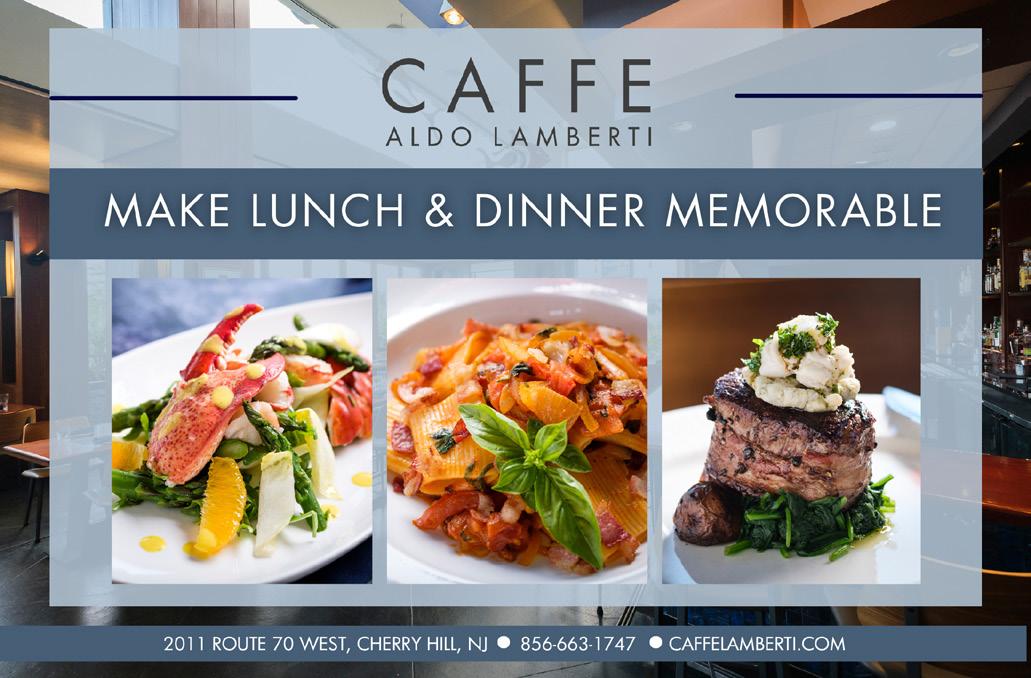

RECENTLY, the New Orleans Pelicans visited Philadelphia to play the 76ers. It was their lone visit during the 2023-24 season. Fans had a chance to see former No. 1 overall pick Zion Williamson, arguably the healthiest of his career. It was also an opportunity to see a former Sixer in his role as head coach. Willie Green, a second-round pick in 2003, has guided the Pelicans into a playoff team in a competitive Western conference. In his third season as an NBA head coach, Green’s win total has increased yearly. It is an impressive start for a guy who had no intentions of entering the coaching fraternity.
“I did not know I was going to coach,” Green said after his team beat the 76ers 103-95. “Throughout my career, I had great teammates who became coaches, and their influence made me want to get into coaching. Aaron McKie, Kevin Ollie, Eric Snow, and Greg Buckner; they were coaching me when I was young because they were my veterans.”
Green’s playing career spanned 12 seasons. He appeared in 731 games, of which the first 422 were with the 76ers. He came to the Sixers on a draft night trade with the Seattle SuperSonics. That same night, then-team president Billy King acquired another second-round pick in Kyle Korver. Korver went on to play 17 seasons in the NBA and is now the assistant general manager of the Atlanta Hawks.
“That’s my brother,” Green said. “Kyle and I came into the league together. I always follow what he does. We don’t talk a ton, but when we do, we’re back in 2003.”
Green was a role player who, for his career, averaged 20 minutes and 8.3 points. Coming back to Philadelphia is always a positive. He was 22 years old, coming out of Detroit Mercy, when he earned his first minutes playing on an NBA hardwood floor. Twenty years later, walking the sideline of that same court brought him feelings of gratitude.
“Philly, I am grateful,” Green said. “I am

“I feel like if you can play in a city like [Philly], in front of these fans, you can play anywhere.”
grateful to have my start here. I had an opportunity to live out my dream of playing in the NBA. I came in with great teammates, great people. They took care of me but also made me tougher. I feel like if you can play in a city like this, in front of these fans, you can play anywhere.”
THAT TOUGHNESS HELPED him endure a 1-12 start to his rookie head coaching season. The Pelicans went 35-34 the rest of the way that season. Green
has always been calm, but it didn’t replace confidence. He manages to blend the two characteristics perfectly. He leaned on that blend that night in early March when his team led by 35 points only to see the Sixers get within five points late in the fourth quarter.
“The first half was a beautiful basketball display; getting stops, deflections, steals, rebounding the basketball,” Green said. “We played in the open floor. The ball was moving, and then in the second half, you know they aren’t going away. You know they are going to take pride in playing in this building on their home floor. They got physical with us.
“When you have your foot on a team’s neck, keep it there. You can’t let them get back into the game, get a rhythm, and get momentum. Give them credit, but some of the ownership of the second half is on us. It is hard to win in the NBA. I am super proud of our locker room.”
Green spoke like a seasoned coach. In addition to the former teammates Green said influenced his decision to get into coaching, the former shooting guard sat next to one of the all-time greats, Steve Kerr. Green was an assistant coach at Golden State from 2016 through 2019. He has two championship rings to remember his coaching beginnings.
He would love to direct his current team to such heights, but as he said, it takes a lot of work to win in the NBA, especially a championship. Still, he loves the game that served him well as a player and is doing the same for him as a coach.
“The similarities [are] the camaraderie and the platform [on which] the NBA allows guys to live out their dreams and take care of their families,” Green said. “Those are things we all wanted to do when we were young. The difference between then and now is that I believe the league is more talented. It’s faster. There is a lot more scoring. You have to adjust as a coach, but that is the league’s direction. And then you add the international piece to it; there are many international players. We love seeing the league continue to grow in this direction.” n


SOME OF US ARE LUCKY enough to have mentors, teachers, and heroes who are critical in our development and mold who or what we become as adults. And when we lose them, we will continue to lead by their example.
On March 7, 2024, I lost my father, Francis Xavier Reilly. He was a 97-year-old World War II veteran and a Wilmington, Delaware native. He grew up in a row home, the fifth of eight children and the son of a Delaware State Senator.
In 1943, he left H. Fletcher Brown Vocational High School to join the Navy. My father was only 17 years old, but he lied about his age and was deployed on the USS J. Fred Talbott Navy destroyer. The rest of his life would hinge on that moment--the whiplash from high school to hunting German submarines in the Atlantic.
Upon returning home, he entered the U.S. Postal Service. It was a welcome change of pace for him, and he would meet my mother, Kay Vandenbraak, at a Pontiac Dealership where he served mail six days a week. My mother and father married in 1950, and one year later, I was born.
With the help of his father, Jack, he built a new home for our family. Their four hands built everything from the basement to the roofing on the second floor. The plot of land was a wedding gift from my mother’s favorite Uncle Jim.
THIS WAS THE BEGINNING of a new American era, with unprecedented peace and collaboration. My father was not the only young man who returned from the war looking to enrich himself and the country he fought for.
The suburban neighborhood was alive with the sound of hammers and saws. Mostly WWII vets themselves, they were glad to be home, and more importantly, alive to see their families. Construction was therapy, it helped them work through the horrors of war that still hung in their past. Building new homes
for their families was the perfect counter to the destruction that they had witnessed.
“Kev, you will never see that kind of selfless camaraderie again!” my father would tell me.
“Everybody helped each other. Whatever you needed– Manpower for lifting 2x4 stud walls, or expertise in bricklaying or roofing.”
Delawareans will be familiar with Van’s

Liquors, across the street from St. Mary Magdalen Parish on Concord Pike. Well, then they would know the legacy of my father’s next venture.
He and Bill Vandenbraak, my uncle, had no experience in retail sales, let alone running a liquor store. Bill put up the money, and my father put in 60 hours a week until Van’s Liquors was the #1 liquor store in Delaware.
Now, Francis Xavier Reilly never saw his junior or senior year of high school, but he was already a far better businessman and investor than most men could ever claim to be.
This was the first lesson from my father. At 16, his “can do” attitude inspired me to cut to the chase and aim straight for the NFL. My
NFL teammates would say, “Riles, he gave you the juice,” meaning he gave me the desire to compete.
MY FATHER was my biggest fan, and I took his guidance into his 90s. He would say either, “You can do this!” or “That’s a recipe for disaster.” And nine times out of 10, he was right.
I had to ‘retire’ from the NFL early due to my rare and largely unknown disease, a Desmoid tumor. We still lived in Wilmington, Delaware at the time, but the only hospital with a knowledgeable doctor was Sloan Kettering in New York. My father made every drive back down to Wilmington--with a clean bill of health--a celebration, with three beers and two hoagies. Desmoid took my left arm, left shoulder, and four ribs. But I am forever grateful that it did not take my life. If I was hopelessly distraught, then my father was thankful for me. He knew how to appreciate life and if he hadn’t, then he would not have been able to return home from WWII and build the house that raised six children. What’s more, that legacy would continue to grow into 18 grandchildren, 31 great-grandchildren, and more to come.
My father now joins my mother who passed away on February 4, 2023, and the outpouring of condolences that our family has witnessed these last few weeks has been tremendous.
As a thank you to everyone, and as a reminder to love the life you have, I will leave you with the five keys to life that my parents gave to me: (1) family first, (2) pray often, (3) be kind, (4) work hard, (5) help others. Their Catholic values were at the center of everything they did, and they embodied the following wisdom from St. Francis de Sales, “Be who you are and be that well.”
Lastly, I need you all to remember that the only thing we take with us when we die is what we give to others. Cardinal George of Chicago said this on his deathbed, and I live its truth every day. n

PHILADELPHIA is truly evolving into a city with a lot to offer its residents. From eccentric restaurants and pop-up eateries to unique clubs and innovative gyms, Philly has something for everyone. Check out these three brand-new gyms that recently opened just in time for summer.
City Fitness, the official fitness partner for the Philadelphia 76ers, just opened its doors in February to their brand new, reconstructed gym at 200 Spring Garden Street in Northern Liberties. Their flagship location was expanded into a spacious two-floor facility conjoined with residential housing. It also is the first City Fitness location to offer yearround heated pool access. Similar to their other locations, members can enjoy HydroMassage recovery chairs, a post-workout smoothie bar and full-service locker area complete with a steam and sauna room. If you prefer classes, Thrive (small group training) and We/Fit (boot camp) classes are hosted daily.

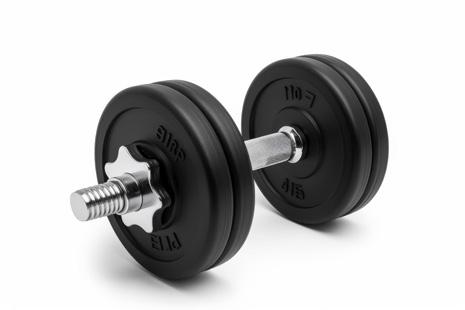
Fusion Gyms debuted their new South Philly venue on February 4th as their third location. It’s open and staffed 24/7 and they are well known for their attractive outdoor space. Fusion also offers 2 full basketball courts and 8,000 square feet of open turf making good on its promise, “where sports meets fitness.”
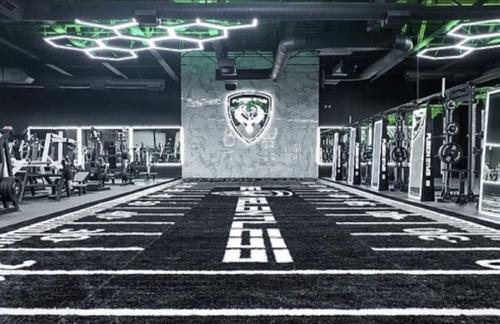
The California-based company, Fitstop, launched its fourth location (and its first one on the East Coast) in Northern Liberties on March 23rd. Different from your average gym, the concept is about functional training in group-style classes with up to 24 people. They combine strength training, metabolic conditioning and endurance exercises directed by a qualified coach. To sign up for a membership and classes, download the Fitstop app and select Northern Liberties as your location. n
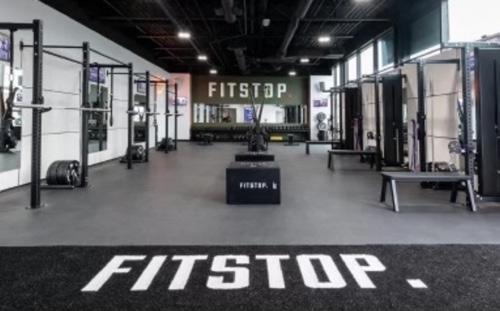

SOME SPORTS JUST HAVE THEM - those iconic culinary companions that round out the experience of being at the game. Baseball’s got hot dogs, popcorn, soft pretzels, and peanuts. Along with those, the sounds of cracking peanut shells under your feet, the wafting smells of concessions, and the satisfying sound of the crack-of-the-bat help to complete the immersive experience that can’t be duplicated from your couch. But if you’re ok with swapping the chance to catch a foul ball with comfort and a casual atmosphere, you can come close by filling your house with nostalgic scents of your own making, whether classic or kicked up a notch. Enjoy some of both with these recipes:
Start with home-popped popcorn and if you’re a purist, leave it at that. But if you’re a fan of butter, browning it adds a rich, nuttiness that elevates the flavor, and may have you experimenting with browning butter for other recipes later.
Yields 4 cups:
1 cup popcorn kernels
3 tbsp canola, peanut, or extra virgin olive oil
3 tbsp unsalted butter
1 tbsp finely chopped rosemary or thyme leaves
2 tsp salt
black pepper to taste
Optional: grated pecorino sprinkled in
1. Heat the popcorn and oil in a 1-gallon, heavy-bottomed pot over medium-high heat. When the popcorn starts to pop, cover the pot tightly and continue to cook until all the popcorn pops, about 2 to 3 minutes, shaking the pot occasionally. Pour the popcorn into a large bowl.
2. In a medium sauté pan over medium-high heat, melt the butter and cook until color begins to brown, shaking the pan occasionally. Remove the pan from the heat. Add chopped, fresh herbs to the butter and pour the butter mixture over the popcorn. Add the salt, pepper, and cheese, if using, and toss while in a popcorn pot or after transferring to a large bowl.
There’s a “bar” for everything these days. If baked potatoes and tacos have theirs, hot dogs can too.
BUNS: Variety brings eye appeal and versatility. To carry your hotdog, offer classic, brioche, and pretzel buns.
THE ‘DAWG: Good things come in threes. Offer Frankfurters, all-beef hot dogs, or turkey/chicken sausage.
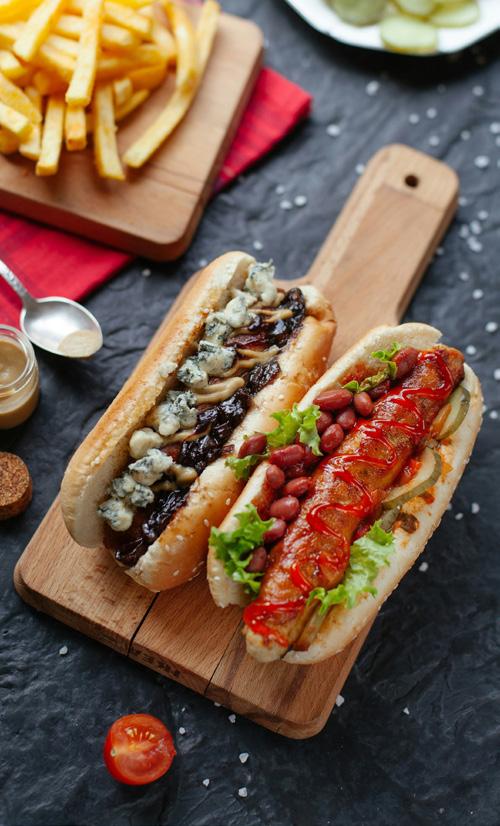
TOPPINGS: Seize all small bowls from your and your neighbor’s cabinets because it’s the toppings that make this fun. For non-homemade condiments, no need to get fancy. Save dishwashing and keep them together in a basket or tray. For store-bought essentials, include ketchup, mustards, mayo, relish, hot sauce, ranch, and BBQ.
BRING ON THE PAIRINGS! For hosts who like themes, go regional with a Chicago (dill pickle spear/sweet pickle relish/ tomatoes/sport peppers/yellow mustard/poppy seed sprinkle), Buffalo (celery leaves/ buffalo wing sauce/ranch drizzle/crumbled blue cheese/chives/scallions) or Mexican (sliced avocado, cotija cheese, and a quick corn salad of corn, lime juice, and cilantro). www.sauteandsoiree.com
Remember, plentiful is exciting so cover your table with colorful toppings that bring the sweet, salty, spicy, tangy, savory, smoky, etc. Take your pick: Sliced pickles/chopped white or sliced red onions/jalapenos/ slaw/shredded lettuce/chopped tomatoes/crumbled bacon/ grilled or diced canned pineapple/crushed potato chips/ baked beans/ chopped herbs/shredded cheese.

Toppings pose a threat to your furniture and floors, so bury them inside your ice cream instead. This seriously could not be easier, and your guests will ask where you bought it.
Start with a container of a store-bought basic flavor. Leave at room temperature to soften a bit. Transfer to a large mixing bowl and with a spatula, fold in your additions, then refreeze until game day. Clear your sink just before serving, fill with ice, and nestle your homemade creations into the ice, with containers open and an ice cream scoop for each. Have waffles and cake cones nearby, or bowls and spoons. And napkins, just in case.
MIX-INS: chopped nuts (“salted” are great for contrast and “roasted” has more flavor) /shredded toasted coconut/broken up brownies/ marshmallows/crumbled Oreos or other cookies/pretzel pieces/ granola/peanut butter/fresh or freeze-dried fruit/candy pieces/and if daring, leftover crumbled bacon from your hot dog bar. Mix into chocolate ice cream. Try it. It’s a “thing.” n


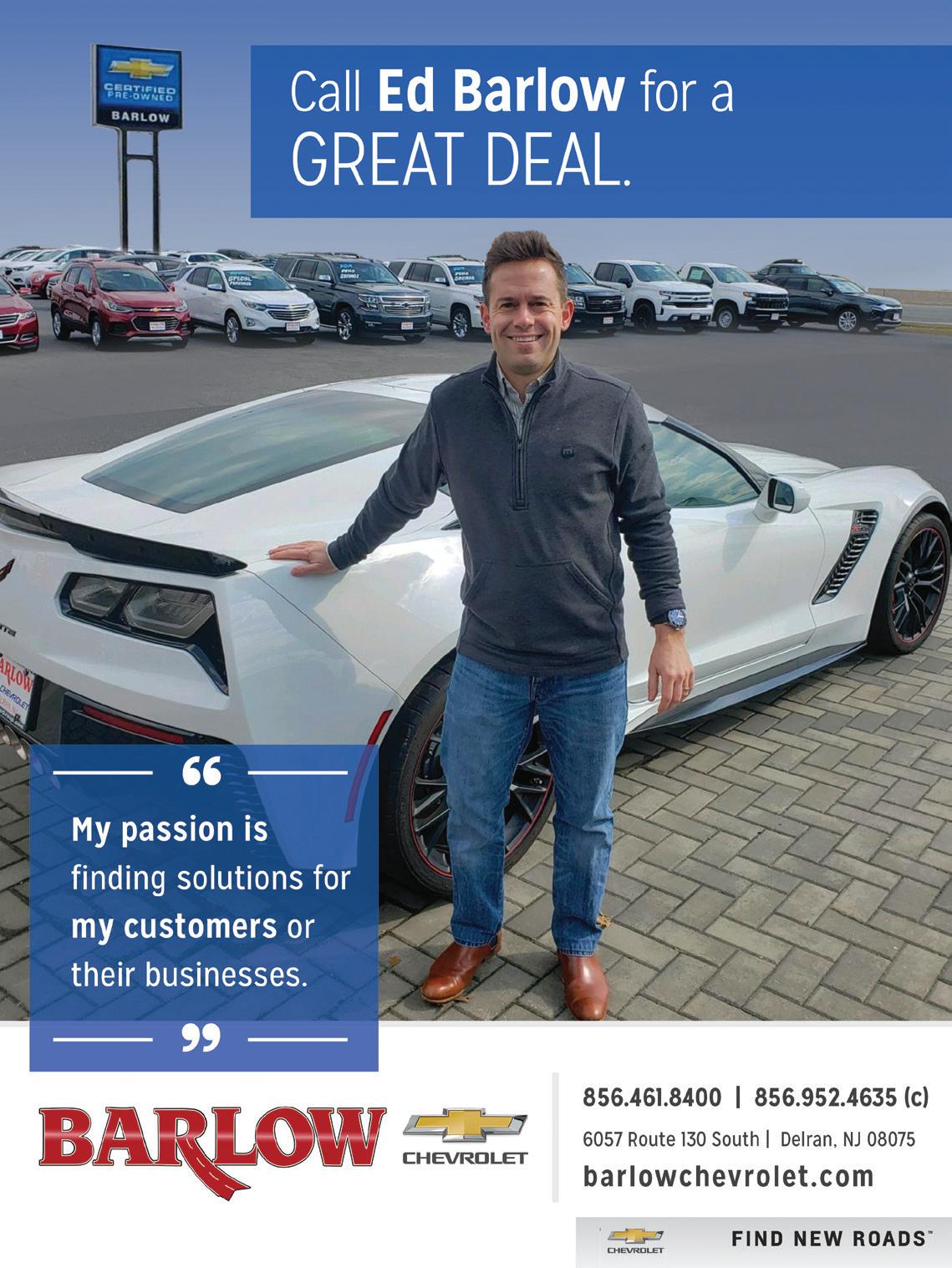



Since their franchise started in 1967, the Philadelphia Flyers have had many players put together great rookie seasons.
Let’s see now…
There was Eric Lindros.
… Bill Barber. … Simon Gagne. … Shayne Gostisbehere. … Brian Propp.
The list is long and impressive, and also includes Mikael Renberg, Jeff Carter, Pelle Lindbergh, Brian Boucher and Ron Hextall, among others.
Oddly, despite all the excellent first-year seasons, the Flyers have never had a rookieof-the-year winner. There was always someone from another team who was deemed better, sometimes controversially. (See the Rangers’ Steve Vickers beating out Barber in 1972-73.)
Which brings us to this season. The Flyers have one of their best rookie crops in recent years, led by goalie Sam Ersson, and wingers Tyson Foerster and Bobby Brink.
None is expected to win the rookie-of-the-
year award. Chicago’s Connor Bedard is the heavy favorite.
Still, Ersson, Foerster and Brink have played major roles as the surprising Flyers try to nail down a playoff berth.
“They’ve been great, and they’ve had an impact on our team in a good way,” said veteran center Sean Couturier, 31, who broke into the league as an 18-year-old in 2011 and knows about the pressure of being a rookie. “It’s been nice to see them grow and be a big part of this team. The fact they’ve been around in the organization for a couple of years, I believe, has helped them. Most of them train here in the summer; it shows their dedication to the team and it’s nice to see them have some success.”
Here’s a look at the three rookies and how much they have contributed:
Drafted in the first round (23rd overall) in 2020, Foerster has displayed a wicked shot and has been effective in board battles. Some of his strength can be attributed to stacking 500 to
1,000 bales of hay a day when he was a teenager. The bales weighed about 50 pounds each. Foerster, you see, worked on his grandparents’ sheep farm in Ontario, building muscle and, in a roundabout way, helping him get to the NHL.
The 6-2, 215-pound Foerster looks like he belongs, making great strides in his first full season. He was particularly effective as the Flyers made a playoff push in February and March. During one stretch, Foerster had nine goals in nine games.
Heading into the home stretch, Foerster, 22, was tied for second among NHL rookies with 17 goals. Bedard (20 goals) was the only rookie with more goals than Foerster, who was tied with Minnesota’s Marco Rossi and Columbus’ Dmitri Voronkov.
The Ontario native has made terrific progress after starting the season with no goals in his first 15 games.
“Even early on when I wasn’t scoring, I feel like I was getting a lot of chances, a lot of Grade A chances. I feel like I was getting three or four a game,” he said. “I felt from the beginning I belonged here. I felt strong enough, fast
 35
Photo courtesy Philadelphia Flyers
Tyson Foerster
35
Photo courtesy Philadelphia Flyers
Tyson Foerster
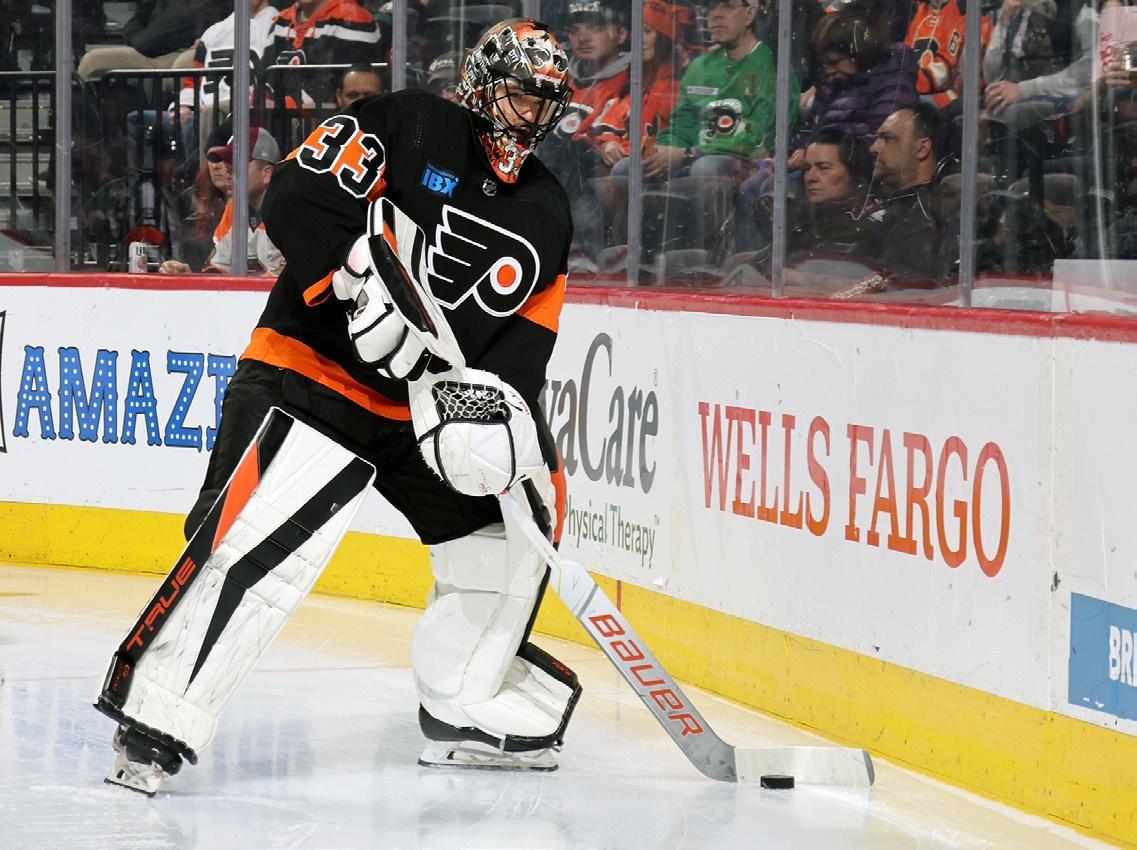
enough, and it was just a matter of putting it all together with the guys.”
During his early-season scoring struggles, coach John Tortorella lauded Foerster for his defense and his play away from the puck.
The sturdy right winger said he prides himself on his 200-foot game.
“I felt if I wasn’t scoring, I still had to do something to help the team win,” he said. “Try not to get scored against, and now it’s a matter of doing both.”
Heading into April, the Flyers were trying to earn their first playoff berth in four seasons.
In mid-March, Ersson was first among NHL rookies in wins (19), tied for first in shutouts (three), second in goals-against average (2.61), and third in save percentage (.899). He became the Flyers’ No. 1 goalie Jan. 23 after Carter Hart took a leave of absence and was later charged with sexual assault stemming
from an alleged 2018 incident. (Hart’s attorney says his client is innocent.)
Since Ersson was anointed the new No. 1, the Flyers haven’t skipped a beat. He has been unflappable, has shown great post-to-post movement, and his athleticism has made him difficult to beat.
The Flyers can thank former general manager Ron Hextall for shrewdly drafting Ersson in the fifth round in 2018.
“If we needed a goalie, we would have taken him earlier,” Hextall said at the time.
The Flyers now have several promising goalies in their system, but those netminders will have to wrestle away the job from the 6-foot-3, 194-pound Ersson. That won’t be easy.
“I feel like I’m still developing,” Ersson said. “I feel like I can perform in this league at a good level. I feel like I’m starting to get more consistent with my play, and this is a great time for me to do it. This is when you want to step forward and show what you’re made of.”
Ersson, 24, said he hasn’t prepared for games any differently since he replaced Hart.
“It’s very much the same for me. I treat it the same. I have the same mentality,” he said. “I’m striving to get better every day, and I think that’s been working for me.”
Ersson and goalie Felix Sandstrom, who replaced Cal Petersen and became Ersson’s backup in late February, are close friends. They used to live in the same apartment complex in Sweden in the offseason.
“He moved into a house and I’m still in an apartment,” Ersson said as the Flyers tried to solidify their playoff spot late in the season. “We still train together in the summers. It’s fun. We push each other. It’s exciting for me that we’re here together and pushing each other.”
Ersson said goalies realize every game isn’t going to be perfect. Having a good friend like Sandstrom on the team helps give him peace of mind.
“You push each other and rely on each other during tough times,” Ersson said.


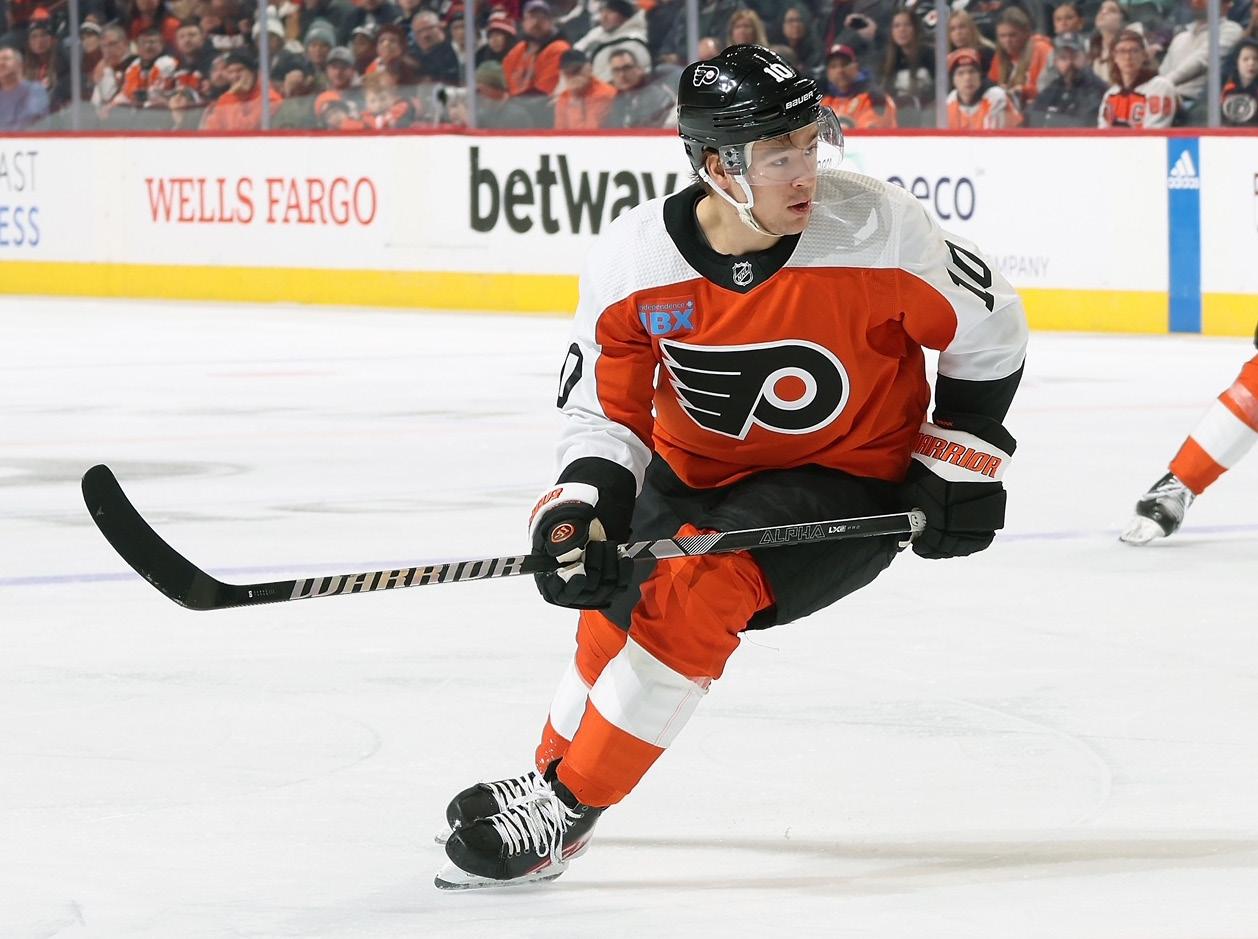
Tortorella has given Brink some tough love this season.
Brink, 22, has been in and out of Tortorella’s doghouse. In fact, the Chaska, Minn., native was benched and didn’t play in his return home Jan. 12 against the host Minnesota Wild. At the time, Brink had 18 points in 36 games, but Tortorella cited the diminutive winger’s inconsistent play.
“Bobby Brink doesn’t have a cemented spot in the National Hockey League,” Tortorella said at the time. “He has a way to go to find that. But that’s to be expected. I think he’s going to be a really good player for us.”
Ten days later, the 5-8, 169-pound Brink was demoted to the AHL’s Lehigh Valley Phantoms. It wasn’t a surprise because Brink had been a healthy scratch in four of his previous six games.
Brink, who was a second-round selection (34th overall) in the 2019 draft, performed
admirably with the Phantoms and returned to the Flyers. The Flyers recalled him in late February and he scored goals in each of his first two games.
As of this writing, he had 20 points, including nine goals, and a plus-7 rating in 43 games. His defense needed work, but the Flyers were a creative and quicker team with Brink in the lineup. They were also more successful.
The Flyers were 22-14-7 with Brink in the lineup, 12-10-1 without him.
While three Flyers are having commendable rookie seasons, they don’t rank with the best in the franchise’s history.
Which player had the best rookie season for the Flyers?
Lindros probably had the best rookie year among forwards, collecting 41 goals and 75 points in 1992-93. It was a season in which Lindros showcased a combination not usu-
ally seen in big men – power and speed.
Despite his stellar season, the “Big E” only finished fourth in the rookie-of-the-year voting that year, behind Teemu Selanne (76 goals, 132 points), Joe Juneau (32 goals, 102 points), and goaltender Felix Potvin (25-15-7, 2.50 GAA, .910 save percentage.)
Hextall had the best season by a Flyers rookie goalie. In 1986-87, he won the Vezina Trophy as the league’s best goaltender and the Conn Smythe Trophy as the top player in the playoffs.
He had a 37-21-6 record with a 3.00 GAA (among the NHL elite in those days) and .902 save percentage (best in the NHL among goalies who had played at least five games) in the regular season. But the rookie-of-the-year race was easily won by a legend named Wayne Gretzky, who had 62 goals and 183 points.
Hextall finished tied for ninth (with Mark Messier and Ron Francis) in the voting, and he went on to have an outstanding career before eventually becoming the Flyers’ general manager. n
WHEN JIMMY ROLLINS was winning an MVP and a World Series for the Phillies in 2007 and 2008 the future was just that, the future. All Rollins wanted then was another MVP season and more importantly another World Series title.
It wasn’t until 2015 when his career began to wane, and the second MVP award and World Series championship never happened, that it started to hit him. Even then, though, at 36 years old and in his 16th Major League season, he wasn’t sure what the future held.
“I was with the Dodgers, and it happened,” Rollins said of his first post-playing discussion. “(But) it was because I was approached. I think everyone’s initial thought about retirement (and) let’s not fool ourselves, everyone knows when it’s coming to an end no matter how you look at it. There are always more years behind you than ahead of you.”
Now 45 years old, Rollins is living in Los Angeles and working for TBS on The Tuesday Night Game of the Week and for MLB as the co-chair for the Commissioner’s Ambassador program. How did it all happen? It started during an off night for him at Dodger Stadium in 2015 when some TV people approached him, on the word of former Phillies teammate Doug Glanville, about doing some broadcasting.
“I looked at them like they were crazy,” Rollins said. “What do you mean? I’m still playing, first of all. And I’m not doing any broadcasting.”
Rollins had done some work with Fox during the World Series while he was still playing. But that was for fun, not for a career. Then when he was released by the Chicago White Sox in 2016, he gave it a second, and more serious, thought.
“I sat around for a month in the twilight zone,” he said. “It was 4 o’clock, I should be at the field. Instead, I’m sitting on my couch looking at a Ferris wheel. I wanted to stay relevant in the game and I knew I couldn’t take too much more time off.”
Rollins reached out to former Major League star Gary Sheffield who got into broadcasting after his 22-year career ended in 2009.
“I asked him how he got into it,” Rollins said. “He said it was perfect timing. Two days later I was in Atlanta interviewing, and I got the gig.”
Asked if coaching was ever a thought, Rollins
laughed.
“Two words,” he said. “Hell no.
“When I retired it was, do I want to travel, play golf, get into tournaments? Then you get there, yeah that’s cool, but there’s more to life than that. Like I said I wanted to stay relevant in the game.”
period that comes with going from hearing the applause, and in some cases boos, every night for 162 nights, the on-field competitiveness and the off-field camaraderie of a clubhouse. All of that vanishes when the playing days end.
“I miss October,” Rollins admitted. “I don’t miss 162 at all. Every day, every night, no. But October, it’s changed a little now, but it was that the first one to win 11 games is World Series Champion. Every night was big. It was all on the line. That I miss. That’s where greatness shows. That’s where you can show your knowledge, to have to prepare for a million things that may never happen. But I enjoyed all of that. Because all of your knowledge, your savvy comes to fruition to try to win those 11 games.”
Rollins spent 2019 and 2020 in the Phillies broadcast booth doing about a dozen or so games a year with regulars Tom McCarthy and John Kruk.
Of course, he enjoyed that because Phillies


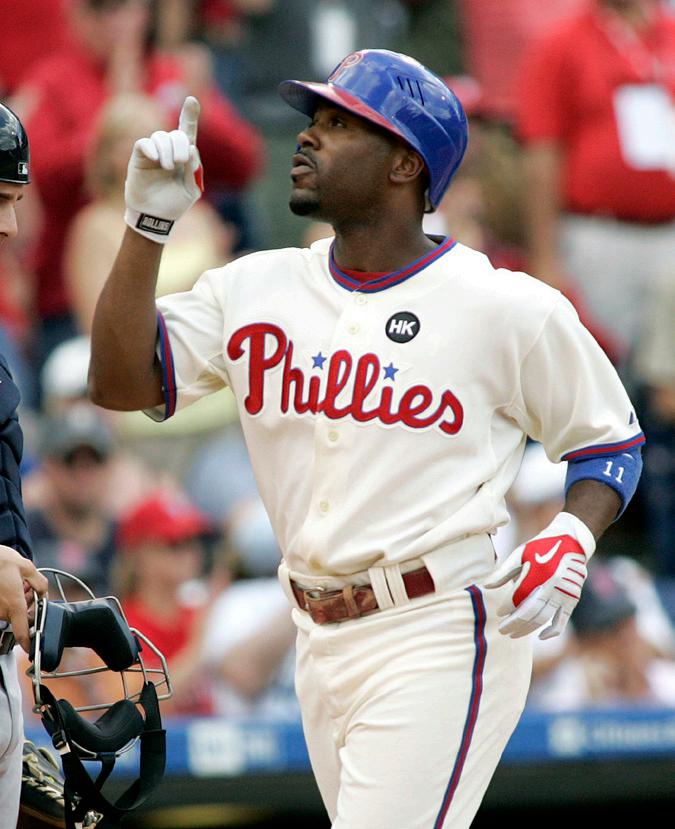

fans will always love Rollins, Chase Utley, Ryan Howard, Cole Hamels and the rest of the 2008 team that ended the team’s 28-year championship drought and the city’s 25-year drought.
“That will always be the benchmark, the team that will always be compared to,” Rollins said of 2008. “And 95 percent of us were Philly draft guys. When I was drafted in ’96 they
were a bad team and it looked like they would never win. But we knew what we had. Give Ed Wade a lot of credit, for having a vision, even though he didn’t get the chance to see it through. He drafted us. He saw that these were the guys who were going to change Phillies baseball.”
That core group of players from 2008 keep in touch, sometimes in person, often through group chats. Some plan to meet up in London this season when the Phillies play the Yankees there.
between his work on TBS and his other job with MLB. That was an even longer shot than him becoming a broadcaster.
Two friends and former players CC Sabathia and Raul Ibanez were working in the Commissioner’s office and Rollins kind of wanted to know why.
“I knew they worked in the office of the
Commissioner,” he said. “I didn’t know in what capacity. But to me, it was, ‘What the hell are you doing?’ Our whole career we fought the other side.”
Rollins met Sabathia for lunch in Atlanta when CC’s son was at Georgia Tech and one thing led to another and eventually a job with Commissioner Rob Manfred.
“My first question was, ‘What the hell are you doing? Make this make sense to me.’ I didn’t understand what players were doing in the Commissioner’s office,” Rollins said. “He explained to me what he does and how Rob really wants to improve the game. And how he appreciates his thoughts and knowledge. That helped, but I wanted to talk to Raul, too.”
They spoke on the phone and Ibanez sold him on Manfred wanting to make the game better and how former players could help that.
“I wanted to help make the game better, but I also wanted to be there for the former players,” Rollins said. “A peeve of mind, you almost have to do a 30 for 30 to find out what happened to certain guys. They’re not at the World Series. They’re not at All-Star games. They might do things with their teams, but that’s it.”
Manfred listened and brought in Rollins and Ryan Howard as the co-chairs for the ambassador program. In its second year, it’s begun to grow.
“Rob said he wanted to make sure the people who made the game what it is be a part of it,” Rollins said of his conversation with the commissioner. “It started as word-of-mouth last year at the World Baseball Classic. Before you knew it, we had a whole suite of young guys, old guys, former players, celebrities, all hanging with us. This is what we wanted. It just kind of grew from there.”
What has also grown is Rollins percentage of votes for the Hall of Fame from 9 percent to 12.9 to 14.8. But it’s still a long way from being enshrined in Cooperstown. Does it bother the 2007 MVP and 2008 World Series Champion?
“No, it doesn’t,” he said. “You understand how it goes. How they grade a player or consider you a Hall of Famer. If you win, and you made an impact in a positive way it’s not all in the numbers. What I saw the most valuable in myself was I showed up to win and I was going to help us win some way, somehow. Some things go beyond the numbers. I was involved in changing the way people saw baseball in Philadelphia. I was a part of that change in the attitude of who we were…. When you think of all of that what more do you really want? And to play that position as long as I did in that city, I don’t know.” n







The Reading Fightin Phils continue to improve their 73-year-old venue while preserving the spirit of baseball and its history. FirstEnergy Stadium is well worth a visit for any Phillies fan.

Jake Starr’s business card lists his occupation with the Reading Fightin Phils as “Media Relations.” It neglects to mention that he’s the team’s broadcast announcer.
Minor league baseball teams keep their staff busy. But Starr clearly doesn’t mind.
At just 24, the voice of the Fightin Phils already shows remarkable professionalism. He’s not just a great ambassador for Reading baseball, he can tell you quite a bit about the roster too.
Like many fans in the region, he has fond memories of being a kid at FirstEnergy Stadium. On a rainy Saturday morning, as would-be National Anthem singers try out in the background, he shares a couple with this observer.
“When I was nine,” he remembers, “our local little league, we raised the most money for our Bat-a-Thon. The reward was we got tickets to the Reading Phillies game. We got to introduce ourselves down on the field and go out and catch in the outfield. That was a really cool experience, getting to do that at a professional baseball stadium.
As far as Phillies stars that he’s seen play, “One notable name I remember in 2016 was Rhys Hoskins. It was cool to look back and think, I saw Rhys Hoskins when he was in Reading.”
He can easily rattle off names of recent Reading players he thinks could be fixtures at Citizens Bank Park soon.
“Johan Rojas got called up to the big leagues right from here last year. I think he’s gonna be a Gold Glove center fielder. Orion Kerkering was here last year, and he pitched some big innings in the postseason. I think he has a chance to be the Phillies closer by the middle of the season.
JerseyMan visited FirstEnergy Stadium on a rainy Saturday morning, as locals were picking up season tickets. Several frequent attendees to the ballpark spoke glowingly of Reading baseball…not just the atmosphere and affordability, but the true sense of community and family.
Ken Myers from Ephrata, picking up a six-game pack with his son Zachary, estimates that he’s been coming to the stadium for 15-20 years.
“We love to be in this atmosphere. It’s a great, old-school ballpark feel. And definitely more affordable. When you come here a lot, you see a lot of the same faces. It’s easy to feel a part of the community.”
The first thing Nick Sichak did when he moved to Reading in 1970 was attend a game; he’s been doing the six-pack for 15 years watching future Phillies grow. “Luzinski, Schmidt a little later, it was the place to be. You could go any place in this park and have a good seat.”
“Close to the field and the players,” his wife Karen says.
Mike Danowski, with Evan Zohner, from Leesport, had just retired from Penske. His gift from the company was a 20-game plan. He’s looking forward to “family fun, eating hot dogs, and watching players develop and move on.”
Cheryll Oestreich is not only a season ticket holder, but she also works as the head of the stadium ushers. She shares her tickets with her family and friends, so she can see them while at the ballpark. It’s been her routine for 25 years.
“I’m a retired teacher. For 27 years I had players come into my classroom. I keep in touch with a lot of former players. We send Christmas cards, my daughter used to babysit for some of them.
“We used to help them with their apartments, their furniture, things like that. Now the Phillies find them places to live. But we used to find people that had a couch and we’d give them the couch. I hate to say it, but we used to look at trash nights, and we’d go around and look for tables and chairs for players,” she recalls with a chuckle.
Jake Starr adds his own take.
“Our season ticket holders, they’re like family here. It’s people that have been coming to games their entire lives, or 20, 30 years. People who just want to be back every year.
“Any given day between the time gates open and first pitch, I’ll see dozens of people that I know, and everyone kind of just feels like this tight-knit family.
“There are those little moments you get where you’ll joke around or just have a nice conversation with someone and you walk away thinking like, this is why you do it, right? It’s the relationships.”
“Mick Abel, one of our top pitching prospects, has a chance to crack the big leagues this year. Griff McGarry, another guy who’s in a similar boat. Carlos de la Cruz, he’s like 6’8”. When he gets a hold of one, it travels far.”
What about players coming up to Reading?
“I think the big name is Justin Crawford, who finished here and at Jersey Shore. If he plays up to his potential, he’ll definitely get here at some point this year, barring a trade. You think Johan Rojas is fast, Justin Crawford’s right there with him.”
This town of 95,000, 70 miles west of Philly, is not just a place to enjoy a ballgame. It’s also where a fan can witness future stars of Philadelphia baseball.
For 57 summers and counting.
In an age of increasingly disposable ballparks…heck, in an age of disposable minor league teams…it’s not easy to find a venue that has been standing since 1951.
The Fightin Phils website shares a detailed history of FirstEnergy Stadium. Here’s the Reader’s Digest version:
Professional baseball has been played in Reading…off and on…since 1875. Lauer’s Park at 3rd and Elm was the home of local baseball until 1941 when poor attendance caused the departure of the Reading Brooks. Just two years later, Lauer’s was unceremoniously demolished.
But the city didn’t give up on bringing baseball back, and in 1945 the City Council voted to buy 27 acres of land in Cathedral Heights to build a shiny new ballpark.
Incidentally, taxpayer-funded sports venues weren’t any more popu-
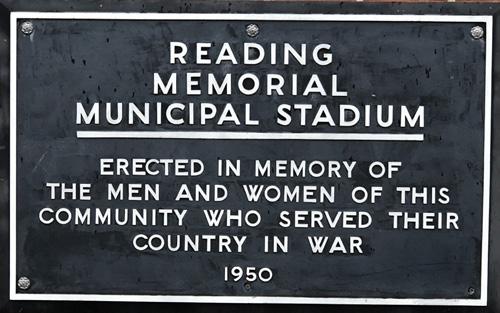
lar in 1950 than they are today. You can find a Reading Eagle article online about the construction. The headline: “Mayor in Stadium Speech Raps Critics for Lack of Vision”. That mayor, Henry Stump, claimed… perhaps correctly in hindsight…that Reading would be a “backward city” without organized baseball.
The story also quoted an American Legion member asserting that “the great sportsmanship developed on the athletic fields of America helped the U.S. gain victory in World War II.”
With images of the Nazis storming through Poland still fresh in American minds, maybe American Legion members were entitled to make that point. In fact, the city named Reading Municipal Memorial Stadium for our war heroes. Ultimately, the new ballpark came in at $656,000.
Despite its proximity to Philadelphia, it was actually the Cleveland club whose minor league affiliate called the venue home at first. The


Reading Indians played ten seasons there before leaving abruptly, to be replaced by a Red Sox affiliate for two years. The Indians then returned for one campaign before leaving for Pawtucket. Suddenly, Reading’s growing status as a forward city was in danger again.
Finally, in 1967, someone in the Phillies’ front office smacked his head and said, “Wait…what about putting our minor league team here? Isn’t it only 80 minutes from Philadelphia?”
After a dozen-plus years of observing the revolving door in Reading, the Phillies saw the obvious benefit of placing their AA affiliate in a town where residents were likely Phillies fans. They even boldly called the team the Reading Phillies, in case anyone missed the connection.
However shaky Reading baseball was for a decade and a half, the idea
worked out. The Fightin Phils…who changed their name in 2012…today share the record for the longest affiliation with a major league club, with the Lakeland Flying Tigers and Detroit Tigers.
Today, FirstEnergy Stadium is more than thirty years older than any other ballpark in the Eastern League, so the initial price tag has been quite the bargain. Initial investment aside, though, the team and city have poured plenty more capital into making FirstEnergy Stadium a terrific home for baseball…and they’re still going.
Craig Stein, who bought the team in 1987, was one of those owners fans wish for…someone dedicated to improving the fan experience on every level. In 1989, the wooden benches were replaced with actual seats, and a roof was added to cover many of those seats in the rain and summer sun. The team also added a picnic area and a food court. By 1993, there was a new grandstand in right field.
There’s a long list of other improvements over the years. A souvenir shop, an irrigation system, a batting tunnel, and a left field bar overlooking the field. The new irrigation system has reduced the average number of rainouts per season from ten to three. Your 90-minute drive from Philly in the threatening clouds is now much more likely to be worth it.
Yet with all the improvements and modernization, a fan can easily attend a game and truly feel like little has changed about Reading baseball. The old-fashioned signage in the concourses, the monuments to the history, the brick façade, and the overall atmosphere in the seating bowl can transport any of us to a simpler time when baseball helped us forget the world’s troubles. It’s not just baseball when you were a kid; it’s


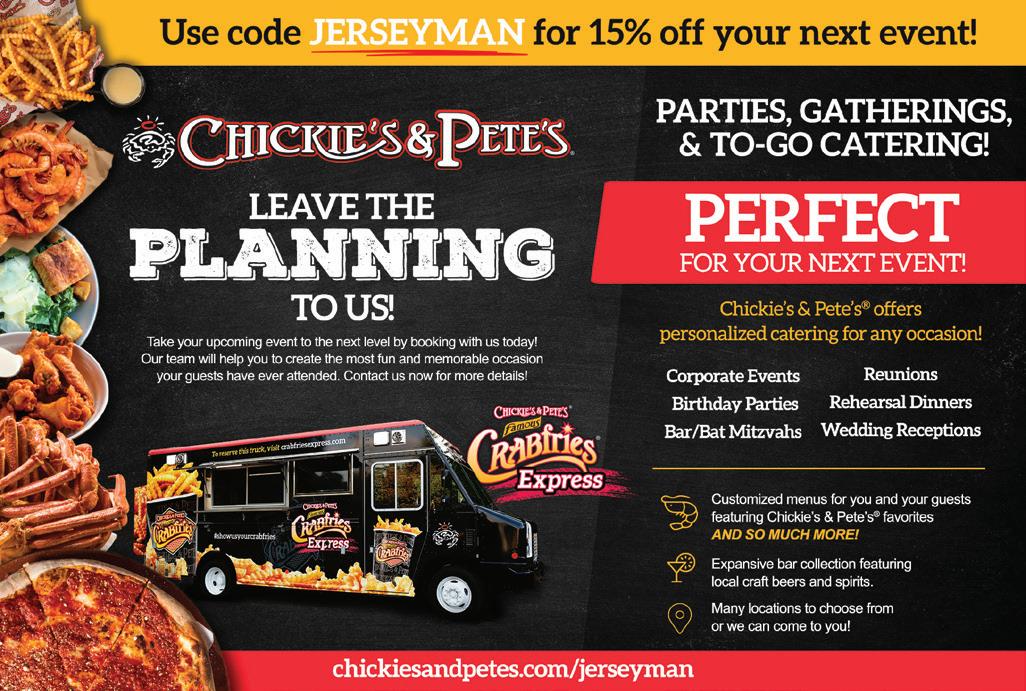
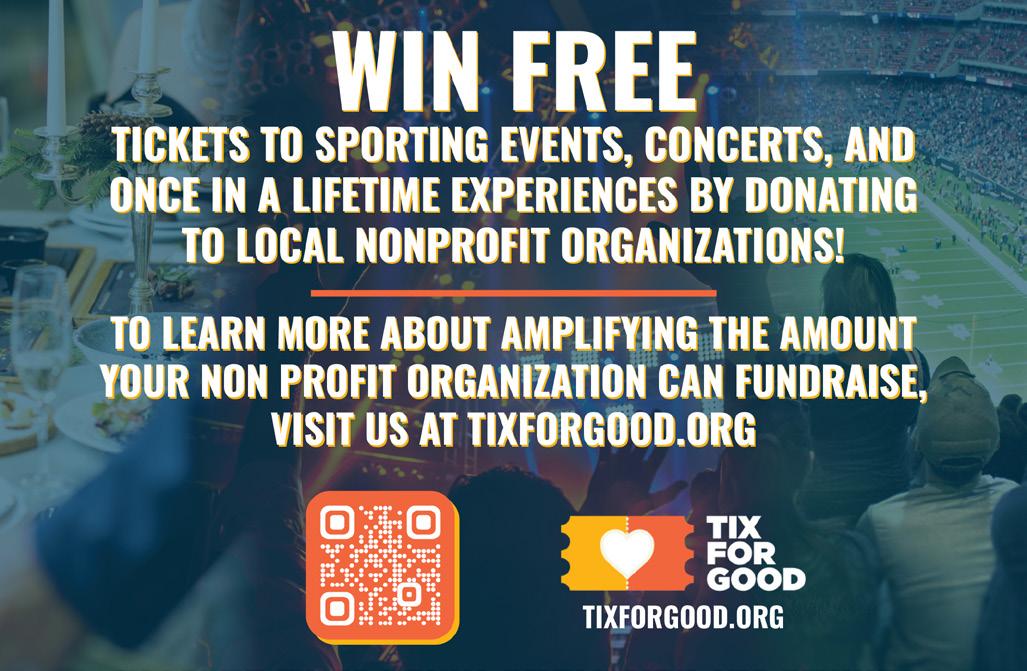
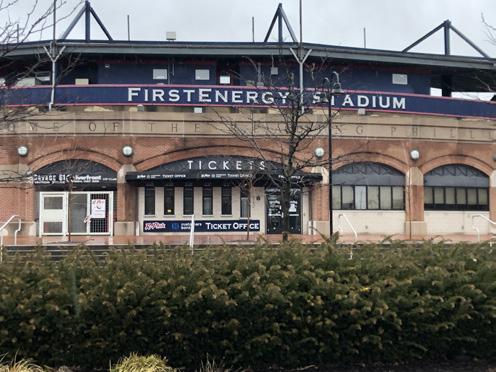
baseball when your father was a kid.
Maybe in the 1950s, the scoreboard wasn’t capable of 68 billion colors. But the renovations honor the past too…like the exploding train that lights up and shoots fireworks when the Fightins plate a run. There’s no better way to remind everyone of Reading’s role in Monopoly.
Awise man (my father) once told this scribe while at a minor league contest, “These guys are professional ballplayers. If you hang a curveball in this league, they’re gonna hit it.”
A Fightin’ Phils game offers all that’s great about attending a baseball game…being out at the ballpark during a warm summer evening, living the excitement of spectacular fielding plays, stolen bases, swinging strikeouts, and walk-off home runs. Fans cheering on the home team as they take the field, fun activities for the kids, and of course, hot dogs that taste better than a steak at the Ritz.
As Jake Starr points out, there are even some advantages to a minor league game over the Show.
“I think it’s the intimacy of the experience,” he says of the appeal of minor league baseball. “You just feel closer to the action. You sit ten rows up behind home plate, and you feel like you’re there, you can feel the crack of the bat. It’s something you don’t get at big league ballparks.”
Best of all, of course, it comes at a fraction of the cost. “Maybe get two general admission tickets, a couple of hot dogs and sodas, you’re spending 30 bucks for the day.”
The only noticeable difference is that the names on the roster aren’t household names…yet. Once players become known in Reading, it’s the locals’ last chance to witness them being part of the local baseball community…one of us…before everyone in greater Philadelphia wants a piece of them.
“Two years ago,” Starr adds, “Bryson Stott was signing autographs for, say, a nine-year-old kid here. That kid now in middle school can watch Bryson Stott and know, ‘Hey, I met him.’”
The city of Reading got it right with their new ballpark in 1951, especially considering, as Starr correctly points out, that the major league club has twice replaced its home since then.
Reading may be “Pretzel City” to outsiders and Wikipedia editors. But for the townsfolk who spend their summer evenings in FirstEnergy Stadium, it’s Baseballtown. n
A game at Reading is your opportunity for your kid to get an autograph (or selfie) with a future Phillies star before it becomes much more difficult to do. There is a long list of ballplayers who made a name for themselves in Baseballtown before they became stars in South Philadelphia:
Larry Bowa (1967-68) – After being thrown out of the first game he played with a scout in attendance, Bowa played four years in the minors before making the Phillies squad, including 155 games in Reading.
Mike Schmidt (1971) – It only took 74 games at Reading before the major league club recognized Michael Jack’s talents. In his professional debut, he played for the big league Phillies against his soon-to-be teammates…and hit the game-winning home run (below).

Mickey Morandini (1989) – Morandini rose through the Phillies’ ranks quickly, and not just because everyone knew they would love hearing Harry Kalas say his name. He spent just 48 games at Reading, but in that short time, he batted .351 with five home runs.
Scott Rolen (1995-96) – The 1997 NL Rookie of The Year spent 81 games in Reading, putting up insane numbers in 1996. His .361 average and 33 extra base hits in 61 games earned him a quick promotion to Scranton-Wilkes Barre.
Jimmy Rollins (1999) – The 2007 National League MVP played 133 games in Reading, batting .273 and leading the team in games and at-bats (at right).
Ryan Howard (2004) – The NL Rookie of The Year and MVP played 102 games for the Reading team. He hit 37 home runs that year, setting a single-season team record.

There are many more household names in Philly that passed through Reading along the way: Boone, Burrell, Nola, Ruiz, Lieberthal and many others. You never know who’s going to be the next star at Citizens Bank Park, so go meet your Reading Fightin Phils now. You may own a valuable autograph of one someday.
 BY MICHAEL BRADLEY
BY MICHAEL BRADLEY
When post-season baseball starts, the pressure grows, and players become even more focused on winning. Because of that, teams must be more capable of performing at peak levels. A mini-slump or a couple of bad innings could lead to a disastrous end to the year.


Keith Rudolf knows all about how important it is to be ready at the season’s most important time. And his role on the Phillies is vital, even if there are times when he never sees the game – except on television.
Since 2017, Rudolf has been the Team Chef for the Phils. He and his staff of four are responsible for providing three meals a day for players, coaches and staff. Often that means a menu with eight or nine entrees. But when October comes, Rudolf and his team are even more productive.
“During the playoffs, we may do 12-to-14 entrees,” Rudolf says. “We want everybody to get whatever they want. We’re trying to win the World Series, and if they want something, I’ll have it. I don’t want somebody upset because we didn’t have lamb chops.”
During his seven seasons with the Phillies, Rudolf has helped transform the game-day food offerings from cheesesteaks, burgers and grilled cheese sandwiches to more nutritious fare designed to help improve performance and keep players healthy. Sure, there are still players who want the occasional candy bar or sugary cereal, but Rudolf and his staff work to make sure the vast majority of the food offered in the clubhouse on game day is healthy and comes from sources working to raise it in ways that are more nutritious.
“We are able to key into the cleanliness of the actual products we use,” Rudolf says. “We use the cleanest cows, pigs and produce. We find the best farms. We’re making sure the animals are grass-fed and grass-finished. They’re

not just giving the animals grains at the end to fatten them up before sale.”
for the team. Rudolf was hired after the players and management collectively bargained to require teams to hire a chef (and staff) or contract the clubhouse food preparation to an outside company. Before the deal, the players had to pay for the food they ate, a big reason why there were fewer healthy options and no real plan.
In 2017, the Phillies also hired Steph Mac-
Neill, MHSc, RD, CSSD [which stands for Master of Health Science, Registered Dietician and Certified Specialist in Sports Dietetics], as Nutrition Coordinator, and she has helped players improve their performance. At first, she worked with all of the organization’s teams. Last year, the Phillies hired three more full-time nutrition experts to handle minor-league needs. MacNeill helps players take the proper supplements, monitors their hydration needs and manages their allergies to various medications and foods. She also consults with Rudolf on menus and travels

with the Phillies to make sure the caterers who handle clubhouse meals are high quality. Her work is alien to some players, but she has made progress.
“Baseball has changed a lot in the last 10 years,” she says. “A lot of players were not used to working with dieticians. I don’t want to turn the tables so people are thrown off. I’m looking for small wins.”
When Rudolf started, after working in the restaurant business for more than two decades, he was the only person in the Phillies kitchen. Since then, his ranks have swelled to the current four-person staff. When people
think about how the Phillies have spent money to improve the organization, they don’t realize that putting resources into feeding the players makes a difference in terms of performance.
“The demand for healthier options skyrocketed once the team began to change the roster,” Rudolf says. “Bryce [Harper] and J.T. [Realmuto] and bigger name guys want to be healthy and do things the right way.”
IN 2014, WHEN RUDOLF’S SECOND child was born, he was running the kitchen at Terrain in Glen Mills, working 100-hour work weeks. “I couldn’t do it anymore,” he says.
Rudolf had begun working in restaurants while at Council Rock HS, where he graduated in 1995. While in high school, he stopped playing soccer but missed the team atmosphere. He took a job at a local restaurant and “felt part of a team again.” One day, the fry cook didn’t show up, and Rudolf received a battlefield promotion.
Rudolf was convinced he had found the perfect career path. Over the next several years, he worked at a variety of restaurants, learning and developing skills. He connected with renowned Philadelphia chef Tony Clark, who died in July 2022. Rudolf convinced Clark

Rudolf would produce a daily menu with six to eight items, but nobody would eat it. “I spent my days prepping the buffet and then making cheesesteaks.”
to give him a chance and was told to arrive the next day at the old Sheraton Hotel on Rittenhouse Square (now Parq) for work at 6 a.m. Rudolf stayed with Clark for a year before heading to Los Angeles.
“Tony was my mentor,” Rudolf says. “I owe him my career. I still think about him. It’s like the ‘What Would Jesus Do?” concept. Instead, I ask myself, ‘What would Tony think of the dish I am making.’”
Rudolf spent “four or five years” in California before returning to the area. He worked at Le Mas Perrier in Wayne before heading to Terrain. When Rudolf stopped working in 2013, he had some “odd jobs.” Things were not good. “Things were not going well,” he says. “It was a dark time.”
At the time, Rudolf was friends with Katie Cavuto, then the dietician for the Phillies and the Flyers. One day, she called him and told him the Phillies were looking for a chef. Was he interested?
Of course he was.
At first, it was just Rudolf, and he had work to do. He would produce a daily menu with six to eight items, but nobody would eat it. “I spent my days prepping the buffet and then making cheesesteaks,” he says.
Former Phillies first baseman Rhys Hoskins was the first player to see what Rudolf was trying to accomplish. “I thought, ‘There’s a possibility here,’” Rudolf says. He started to change things slowly, using grass-fed beef and cheeses with higher nutritional values when making cheesesteaks. He gradually made other changes, until the players were accepting the differences.
The Phillies stepped forward, too, building a kitchen in the clubhouse and allowing Rudolf to pick out the grills and ovens he preferred. There is also a full dining room in the clubhouse. “They let me know they were
interested in doing this right,” he says. The team’s strength and conditioning and training staff partnered with him to encourage the players to eat better so that they could improve their performance.
And MacNeill plays a sizeable role by finding the right catering companies for road trips and working with Rudolf to maximize the marriage between food and performance.
“During the off-season, we’ll speak about having different theme days when games start,” MacNeill says. “We’ll have twice-a-week recovery days where we’ll focus on Omega 3 fats that can be found in fishes.”
Rudolf begins at about 8-9 a.m. when he arrives in the clubhouse and cleans up anything from the night before that wasn’t addressed. He sits down with a cup of tea and reviews the menu for the day. Since he has to provide three meals, much of the planning is done in advance, with input from MacNeill. He’ll have lunch ready by noon, usually for the coaches and staff. Players show up starting at 1 p.m., and they’ll have some lunch, too.
From there, it’s on to the pre-game meal, which he and his staff will make sure is ready by 4 p.m., which is plenty of time for a 6:40 game time.
“Before the game, the players won’t eat too much,” he says. “It’s more finger foods and sandwiches. Grab and go – and a lot of fruit.”
During the game, Rudolf and his staff see very little – if any – of the action in person. They’re too busy getting ready for dinner, which they serve as soon as the game ends.
“We have the game on TV,” he says. “There are times when we are doing braised meats in the oven that we’ll take a walk out into the stadium to watch. During the playoffs, the games take longer, so we get some time to watch. It’s tough spending a 15-hour day under the stadium.”
The players eat fruit and energy bars while playing, but their biggest meal comes afterward. Rudolf’s day usually ends about an hour to an hour-and-a-half after the game ends. As Rudolf said, post-season games require more effort, but the off-season brings time to recharge and research. Once Spring Training starts, Rudolf spends several weeks in Clearwater, making sure players have the proper fuel. It’s part of a year-long cycle designed to make sure the team has what it needs to win.
“I’m the first team chef for the Phillies,” he says. “That’s an honor.” n


WE’VE ALL BEEN THERE… at the beach, the park or a summer picnic. Someone pulls out a frisbee. Yes, that molded plastic disc. Despite its apparent simplicity, it’s not so easy to throw it exactly where you want or even smoothly pluck it out of the air and make a clean catch. You’ve got to take into account the wind, have the right flick of the wrist and maybe you’ll be able to precisely toss it to your partner.
But the pros who will line up each week from May through July for a 12-game season with the Philadelphia Phoenix of the Ultimate Frisbee Association (formerly the American Ultimate Disc League), make the impossible look simple. With speed, athleticism, sick leaping ability and players who are constantly in motion, you might just fall in love with the game too if you check it out. The Phoenix, under the majority ownership of Dr. Christina Lee Chung and her husband Dr. Jeff George, will play five of their six home games on the campus of Neumann University in Aston, PA. And if you can’t get out to Delco for a game, all league matches will be streamed live on watchUFA.tv. And Phoenix games will be rebroadcast
Philly’s professional ultimate Frisbee team has found a new home as its 2024 season gets ready to take off. Hey, did someone say Dollar Dog Night?
the Wednesday after they’re played at 8 p.m., on NBC Sports Philadelphia Plus. The team’s season finale—the Commonwealth Cup Game against Pittsburgh—will air live on NBC Sports Philadelphia on July 20, at 3 p.m.
One of the team’s standout players, 27-yearold “Big Game” James Pollard, is an athletic freak. At 6-foot-5 and 183 pounds, he’s a former tennis player at Jefferson University from where he graduated in 2018 with a degree in mechanical engineering. He runs a 4.75 second 40-yard dash, can sling the disc at least as far as the length of the ultimate field (80 yards) and has mad hops with a standing vertical leap of 30 inches. He not only helps the team on the field but also off, spreading the word about the game at camps and clinics the Phoenix run in various schools and communities in Philly and the surrounding suburbs.
THE SPORT—now specifically called ultimate—continues to grow. It has been recognized by the International Olympic Committee though it will not be part of either the 2024 or 2028 Summer Olympics. The sport has deep roots in New Jersey where the first known sanctioned game was played in 1968 amongst students at Columbia High School in Maplewood. Two years later, the first in-


terscholastic game pitted Columbia against Millburn High. And in 1972, Rutgers and Princeton held the first formal intercollegiate game, much like they did with football 103 years prior.
ULTIMATE COMBINES a lot of concepts and rules from football, basketball and soccer (and you can see some rugby in there too). A point (or goal) is scored when one team catches the disc in the end zone the opponent is defending. The field is basically laid out in the same manner as a football field, but the yard lines are not part of the game. The playing surface is roughly 80 yards long and the end zones are 20 apiece. A team possesses the disc for as long as they can hold onto it. Once a player catches the disc they cannot run with it, must establish a pivot foot and pass the disc within seven seconds. The team must complete passes along the way to scoring a goal. Last year in the UFA, the Phoenix averaged 19 goals per game and allowed just over 18 goals per game, so with 37 trips to the end zone in each contest, there is a ton of action and a ton of scoring.
According to team minority investor and Phoenix Fun Czar, Johnny “Goodtimes” Nottingham, when you check out this sport in per-


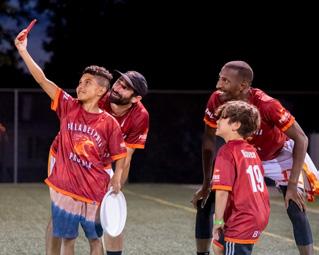

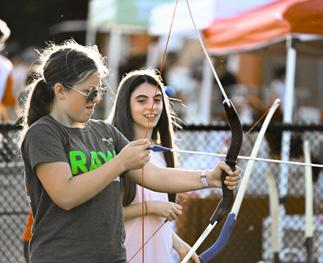

son, you’ll be hooked.
“I’ve been doing this a few years now and still, at every game, there’s at least three or four instances where I’ve just been like, ‘Holy s**t! How’d he do that?’ ” Nottingham said. “Somebody will fire the disc like 70 yards and another guy will track it down on a dead sprint and catch it while diving out of bounds. And once people see stuff like that, they’ll buy into the excitement just as much as I have.”

NOTTINGHAM, whom Chung has charged with creating a memorable game day experience for fans through marketing and promotional duties, is also an investor in the Philly-centric Shibe Vintage Sports and hosts Quizzo at several establishments in the region as well as corporate and private events. He and the rest of the Phoenix team, from top to bottom, are thoroughly invested in creating a great fan experience. And that will include a “Dollar Dog Night” at the team’s second home game on May 11.
“The Phillies got rid of Dollar Dog Night, so we’re doing it,” says Pollard, who scored 41 goals to rank 11th in the league and second on the team in 2023. “We’re going to get some
partner, President and CEO of the Phoenix since 2018—she’s one of only two women to be a majority owner of a Philadelphia sports franchise along with the legendary Billie Jean King of the Philadelphia Freedoms in World Team Tennis—has a clear vision and goals she wants to reach with this team. And that’s despite the fact that she and her husband—Chung specializes in dermatology while George specializes in emergency medicine—did not have traditional business backgrounds but come from the healthcare sector.
“I wanted to build a sports business and sports enterprise that was going to compete, that’s going to be around,” Chung said. “I wanted to turn the franchise around. We’ve done
“If you want to be a fan of ours, we don’t care about anything else. We’re thrilled to have you aboard.”
extra fans out for that one, I’m sure. And it’s against Boston so we have to pack the stands.”
“If you want to be a fan of ours, we don’t care about anything else,” Nottingham says. “We’re thrilled to have you aboard. So, if you show up at a game, we are just so psyched to have you there and once people see that, it’s just sort of like, ‘Oh wow, when I come here, I’m getting a little more special treatment than I would at a much larger sporting event.’ That’s what we’re trying to build. We’re not just trying to raise that awareness but once we get people to show up, we want to have that wow factor because that ultimately will determine the level of success we can reach.”
Chung, 48, who has been the managing
that. We increased gross revenue by 788% from 2019 to 2023. We have developed a big youth program because I think that development is super important. Every year it’s expanding. We have eight different programs within our youth program. We have after-school programs, school vacation camps, summer camps, advanced programs, an intramural league, clinics and we do school assemblies. Every year different townships contact us to run summer camps at their locations, so we started it and were very Main Line-centric. We have expanded to Limerick, Phoenixville, Lower Merion, Southampton and more. We’ve done a really good job reaching the youth.”
“Without having a big business background,



you can still see the different arms of the business and see how you can organize it and improve it,” George added. “We were starting from scratch. It’s like buying a house that needs to be renovated and doing it your own way. That was very attractive. It’s like a bare-bones project we could really do it our own way.”
George, 51, played the sport while at Penn State—he still plays actually—and introduced it to his wife in 2003 shortly after they met at Drexel’s College of Medicine and five years before they were married.
“I fell in love with the sport. It was new and exciting to me. I grew up playing soccer. I’m a sports fanatic… I love almost all sports. Ultimate encompasses a lot of the things I love about sports in general. I love seeing athletes showing off their speed and verticality. I love team sports and I love how ultimate is really the ultimate team sport.”
POLLARD IS ONE OF THOSE impressive athletes that makes watching this game so enticing. But aside from his on-the-field heroics—he was voted the league’s most-improved player in 2022—he also plays a big part in spreading the word about his team and the sport. He’s heavily involved in outreach, specifically the camps and clinics the Phoenix put on.
“I think it comes from just being into coaching,” said Pollard, who serves as an assistant coach for the University of Pennsylvania’s men’s club ultimate team. “It starts with my dad and what he does. He’s a leader in his orga-
nization and the people there call him coach. Plus, [there are] my personal coaches through tennis. I’ve always seen the value of having a good coach. I figured when I stopped playing, I’d get into coaching. I did a little bit [with tennis] while I was in high school and we did some in college, coaching in clinics. I enjoy coaching and I enjoy giving back to the community.”
Pollard, who grew up in Virginia but has made Philly his home since coming to town for college, is excited about where the Phoenix are going as well as where the sport of Ultimate is headed in the region.
“We had a couple of players last year who actually came to some of our camps back in the early days. It’s cool to see that return on investment and that we have been building up players. In (2018) my first season, we had a handful of really young guys but there were four or five of us who were just graduating from college. Now that group is mostly starters on the team. We really grew the base of what we had and just progressed with young talent to take over the team eventually.”
And now with a new home field, some creative marketing, strong leadership and an exciting, fast-paced product on the field, the Philadelphia Phoenix are ready to continue to grow in 2024 and beyond. n
For more on the Philadelphia Phoenix such as their 2024 roster, complete kids’ summer camp and clinic schedule, youth leagues, and ticket info visit: www.watchufa.com/phoenix
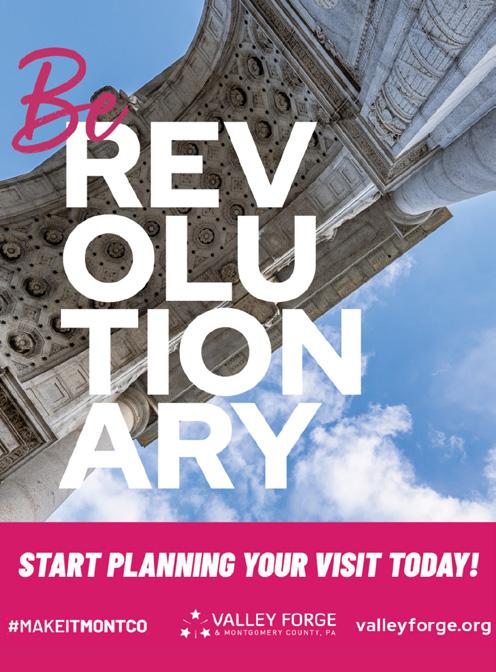








We are proud to introduce you to our private business network
H Do you want to expand your network in Philadelphia and South Jersey?
H Do you want to create powerful connections with other business professionals in the area?
H Do you want to attend exclusive networking events once a month at local venues?


“Being a part of JerseyMan is not just about expanding my network; it’s about building lasting relationships with likeminded executives who are not only successful but also incredibly supportive. This group has truly elevated my networking confidence, and I am grateful for the doors it has opened and the friendships forged. Being a part of JerseyMan is not just about expanding my network; it’s about building lasting relationships with like-minded executives who are not only successful but also incredibly supportive. This group has truly elevated my networking confidence, and I am grateful for the doors it has opened and the friendships forged.”
– Tracie Ullman, CEO of SoulScapes Medical Spa & KT Aesthetic Academy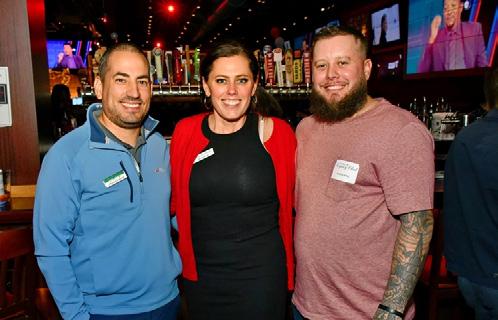
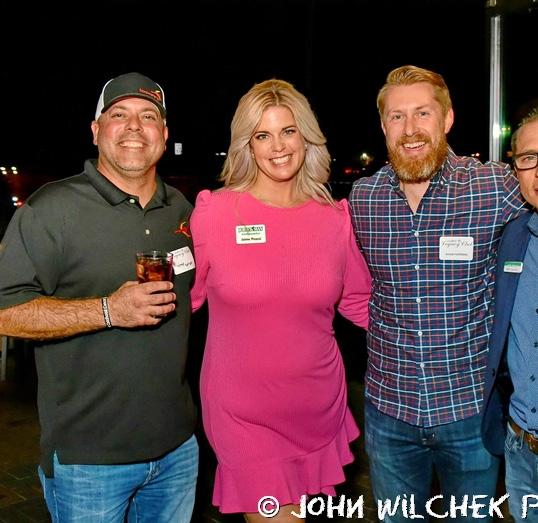


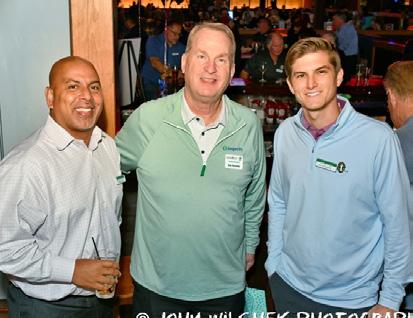


Martin H. Abo Abo and Company, LLC
Dr. Zahra Afsharzand Cherry Hill Dental Excellence
Ross Akselrad Pulse Entertainment/Productions
Alexis Allegretto City Abstract
Joe Allen Sonitrol
Chris Ambruch Alcom Printing
James Andreacci OceanFirst Bank
Dr. Victory Anyiam Victory Chiropractic & Performance, LLC
Joel Ardman Carroll Engineering
Tyler Ardron Risk Reduction Plus Group
Liz Arking Weichert Premier*
Bob Arnold SeatonHill Partners LP
Suzanne Aumack AUMOST Creative Group
Keith Baldwin Spike’s Trophies & Awards
Ed Barlow III Barlow Auto Group
Michael Barreto Metropolis Passenger Logistics*
Brian Barry Keller Williams Cherry Hill
Justin Bathurst CODA Search
Robert Beach Procision Commercial Realty & Procision Business Brokers
Robert Bender The First National Bank of Elmer
Tom Bentey Suburbanite Productions
Karl A Berger Fractal Sales Solutions
Tom Bernetich BDO USA, LLP
Nicholas Bernhardt Bernhardt Asset Management
Brian Bielawski Dynamic Advertising Solutions*
Marcin Bielecki Ronald McDonald House Southern NJ
Matt Blatz PCS
Matthew Bledsoe Richard Green & Son Public Adjusters
Christine Blithe ARS Truck & Fleet Service
Eric Blumenthal EB Funding LLC
Ken Bode Integrity Staffing Solutions
Anthony Botte A.M Botte Mechanical, LLC
Jessica Botte A.M Botte Mechanical, LLC
Michael Bowman Valley Forge Tourism & Convention Board
Matthew Boyce Maximus Mortgage Advisors
Michael Brady LPL Financial
Troy Brocco Restoration Partners
Kimberly Bryson Girl Scouts of Central & Southern NJ
Taylor Campitelli WeThrivv
Mark Caprarola CapWealth
Ethan Capri Capri Bookkeeping Solutions, LLC
Vince Ceroli Vantage Property Managers
Mike Chapman Tourneau
Vince Cieslik Capehart Scatchard
Rudy Cislak Diversified
Geoffrey R. Cleveland Momentum Wealth Partners
Jon Cofsky whitepenny
Justin Colantonio Total Technology Resources
Cheryl Colleluori HEADstrong Foundation
Mike Commisso Docutrend, Inc.
Joseph J. Console Console Matison LLP
Trevor Cooney Archer & Greiner P.C.*
James Corbett Project Refit
Peter Cordua Cordua Consulting, LLC
John Cruice John Cruice Photography
Matt Cullen Palo Alto Networks
Rob Curley TD Bank
Bill D’Ambrosio Verde Payments
Benjamin Dash DashLaw LLP
Justin Deal PayDay Employer Solutions*
David Debreceni Edward Jones
Joseph DeCandido Kamelot Productions
Anthony DeGerolamo DeGerolamo Financial Strategies
Sheri Desaretz Looking Forward Coaching
Gary DeVito Zarwin Baum Devito Kaplan Schaer Toddy, P.C.
Kevin Diduch KD Law Group*
Devin DiNofa Keller Williams Real Estate
Erin Dimitriou Smith Triou Marketing, LLC
Lia Domenick Allstate
Bob Doria Medford Village Country Club
Victoria Draper Travel with Pam Draper
Evan Dumont BELFOR USA Group
Ken Dunek New Opportunity Publishing
Doug Easlick Graham Company
Anna Ehlenberger Converge HR Solutions
Donald Eichman Alcom Printing
William Emerson Emerson Group
Ryan Esposito Constellation Brands
Bill Evans Liberty Fox Technologies
David Ewing Coldwell Banker
Andrea Fanfera Green Street Building & Design
Gary Farnesi WSFS Bank
Josh Feldschneider Pine Valley Investments
Mark Fisher Fisher Wealth Management
Patrick Fisher WSFS Bank
Jerry Flanagan JDog Brands
Sean Flanagan Always A Good Sign
Stephen Flanagan JDog Carpet Cleaning
Steve Foreman Financial Business Systems, Inc.
Jeff Freeman Comcast Business
Rachel Frkovich Workplace HCM, Inc.
Mike Fuller Maggianos
Joe Gangemi Suite Recording
Denise Gardner DeGerolamo Financial Strategies
Shane Gardner Gary F. Gardner, Inc.
Tom Gee Palo Alto Networks
Robert Gelsher Janney Montgomery Scott LLC
Julia George Combined Insurance
Damien Ghee TD Bank
Jim Gibson Alcom Printing
Dave Gill Haefele, Flanagan & Co., P.C.
Robert Glycenfer Financial Guide
Mark Godofsky Surety Title
Ryan Golembiewski Cloud113
Steve Goodman Greater Philadelphia YMCA
Stacey Gorin Capehart & Scatchard, P.A.
Gary Greco Scientia Consulting LLC
Chris Green Richard Green & Son Public Adjusters
Liz Green Richard Green & Son Public Adjusters
Alec Greenhalgh Fidelio Dental Insurance
Jen Groover Thuzio
Dr. Thanuja Hamilton Advocare Sleep Physicians of South Jersey
Sharon Hammel Republic Bank
Steve Hanscom McCann Commercial Real Estate & KW Commercial
Berkley Harmon Insperity
Pete Hatton Hutchison Mechanical Services
Amy Jo Haven-Reynolds Haven Marketing
John Herring LINKBANK
Pam Hisler Republic Bank
Fred Hoelsworth Topgolf Mount Laurel
Robert Hoey Janney Montgomery Scott
Robert Hoey, Jr. Janney Montgomery Scott
Kirstie Holmes loanDepot
Michael Holt Holt, McNally & Associates
Will Houston Custom House Technologies
Cheryl Houtz The Benefit Doctor
Nichole Howard Nichole MCH Photography
Kristi Howell Burlington County Chamber of Commerce
Stephen Hruby, Jr. Patriot Landscaping Services
Edward Hutchinson Hutchinson Mechanical Services
Michael Hyland Gateway Mortgage Tim Irons T.C. Irons Insurance
Mike Jaconelli Tam Lending
Ron Jaworski Ron Jaworski Golf
Jim Jeffers BBSI
Timothy Jennings Telecorp
Chris Jerjian Kiwi Offices
Keith Johnson Laurel Lanes
Jessica Jones Simplifi Payroll & HR
Kenneth Justice KMJ INC.
Abbie Kasoff Say It With Clay
Corey Katzen Forefront Telecare
Keith Keller SpeedPro South Jersey
Lisa Kelly Foundation Title
Bob Kennedy Insperity*
Robert Kennedy The Kennedy Companies
Kristen Kidd Lux Summit Studio
David Klemic Klemic Performance Method
Damon Kline Remington & Vernick Engineers
Eric Knoblauch Northwestern Mutual
Tonya Kok T-Mobile for Business
Anne Koons BHHS Fox & Roach, NJ/PA & Vineland Construction Co.
David Kryszczak Four Star Event Catering
Edward Labman Univest
Joe LaGrossa Intellicor
Keith Langan Surety Title Company, LLC
Bryan Levens SNEVEL Technologies, LLC
Brian Libby Primepoint
Ronald Lieberman Rigden Lieberman LLC
Robert Lipinkski Cherry Hill Cigar Club
Joseph Logan Logan Lending, Inc.
John Lorenzo TwoTwo Creative Eric Lynn Northbound Strategies
Joey Mac Dizon The Mobile Cigar Lounge
Chris Maciborski Weisman Children’s Hospital & Voorhees Pediatric Facility
Doug Madanick Kulzer & DiPadova, P.A.
Jennifer Madera The People Placers
Anton Makharynets ANTVAL Rentals
Matthew Malinowski Corporate Source
Sarah Mamzic Comtec Systems Inc.
Christen Martorana Moyer Aviation Inc.
Tom Matera AnnieMac Home Mortgage
Betty Maul FrontEnd Graphics
Matthew McDevitt Positive Wiring
Chuck McHugh LifeBrand
Carson Merine Keller Williams Realty
Frank Messina AllRisk Property Damage Experts
Jeremy Messler Jeremy Messler Photography, LLC
Marla Meyers Legacy Treatment Services Foundation
John Milne JPM Benefits Services
Brian Minker Able Technology Partners, LLC
Anthony Minniti Camden Apothecary Dispensary at Bell Pharmacy
Justin Mirigliani Checkmates Charitable Association
Samir Mody Keller Engineers of New Jersey*
Rachel Monaghan Metatron Marketing, Inc.
Anthony Mongeluzo PCS
Ron Monokian We Make It Personal by Joy’s Hallmark
Dan Morroni Morroni Custom Clothiers
Steve Mullen Insperity
Peter Musumeci TD Bank
Joel Needham AssuredPartners
Kathryn Newell IDS Drones Inc.
Dan Ninerell Modern Classical Chefs
Joe O’Donnell Fulton Bank N.A.
Joseph Ohlweiler The Alternative Board Southern New Jersey
Sheryl Oliver New jersey Angels
*JerseyMan/PhillyMan ambassador
Harry O’Neill BELFOR USA Group
Marc Oppenheimer Parx Casino
Amy Osborn New Jersey Vietnam Veterans Memorial Foundation
Michael Ott At Home Technology
Michael Oxman Henry A. Davidsen
Michael Pallozzi HFM Investment Advisors, LLC
Rae Pastore Durand, Inc
Tom Pellegrino Everest Discovery LLC
Lee Perlman Law Offices of Lee M. Perlman
Mike Perlow Perlow Productions
Devon Perry Garden State Wine Growers Association
Jaime Picozzi CTN Staffing*
Kenneth Pitoscia Greentree Mortgage Co., LP
Frank Plum Workplace HMC Inc.
Roy Plummer Armed Forces Heritage Museum
Mike Poalise PeopleShare
Steve Pontrello Barlow Work Trucks
Peter Ponzio Penn Investment Advisors
Casey Price Price & Price, LLC
Andy Pritikin Liberty Lake Day Camp & Special Events
Eileen Propp Prime IV Hydration and Wellness
Steven Quagliero Vantage Labs
Geoff Rabinowitz New Balance
MaryAnn Ragone AltruVision - A Lions Eye Bank
Soleiman Raie Law Offices of Michael Kuldiner, P.C.
Chris Rathke Independence Blue Cross
Ryan Regina Big Sky Enterprises, LLC
Keith Reynolds RVN Television
Matt Ribaudo BostonMan Magazine
Raegen Richard Amerprise Financial Services, LLC
Robert Richardson Allied Document Solutions and Services, Inc
Alexandra Rigden Rigden Lieberman LLC
Stephanie Rizzi M&T Bank
Sebastian Rohan Weichert Premier
Alexis Rose Capehart & Scatchard, P.A.
Mike Rosiak Weisman Children’s Hospital & Voorhees Pediatric Facility
Lisa Rovens Paul Glat MD, FACS
Andrew Ruhland National HR
Bill Sablich Outfront Media
Jawad H. Salah Archer & Greiner, P.C.
Robert Salotto First Financial Lending
Michelle Sapp Arhaus*
JP Sawyer The Alias Group
Sergio Scuteri Capehart Scatchard, P.A.
Jeremy Shackleford WSFS Bank
Hala Shawaf-Barson VoIP Doctors Business Telecommunications
Lee Shields Marcum
Jennifer Sherlock Jenna Communications, LLC
Dr. Joel Shertok Process Industries Consultants
Gary Shickora Northwestern Mutual
Joe Silva HBK CPA’s & Consultants*
Jerry Silvi Cornerstone Bank
Joe Simone Regional Resources Energy Group
Josh Smargiassi Boomerang
Chris Smith Micro Integration Services, Inc.*
Michael Snyder Spark Creative Group
Richard B. St. Maur III Coordinated Project Solutions, LLC
Jeffrey Steigerwalt Mid Penn Bank
Robert Sullivan Schooley Mitchell*
Melissa C. Tagye Truist Wealth
Scott Tanker Tanker Consulting Services
Dr. Keisha Taylor Dr. Keisha Stephenson Taylor Consulting Services, LLC
Thomas Taylor Repice and Taylor, Inc.
Robert Telschow, Jr Colliers Engineering & Design
Brooke Tidswell Farm Truck Brewing
Christopher Toppi Compass Wire Cloth Corp.
Ron Tornari Groceries for Grandparents Fund
Manuel Torres Insperity
Kenneth Toscano New York Life Insurance Company
Joseph Tredinnick Cornerstone Bank
Jim Turpin Chelsea Wealth Management
Tracie Ullman SoulScapes Medical SPA & KT Aesthetic Academy
Dave Uygur BHHS Fox & Roach
Les Vail Workplace HCM, Inc.
Emory Vandiver Interactive Security
Joseph Velez 3D Voice & Data
Angela Venti Alloy Silverstein
Michael Vertolli Comtec Systems Inc.
Michael Vitarelli Jessco Construction, Inc.
Josef Vongsavanh Center City Photo
Jeff Walter The Wallet Group
Danielle Wasniewski Blue Moon Estate Sales
Bill Webb Saratoga Benefit Services
Phil Wessner Fulton Bank
Drew Whipple OceanFirst Bank
John Wilchek, Jr John Wilchek Photography
Zachary Wildsmith Cappuccio & Zaorski, LLC
Christofer Wilhelm Gateway Mortgage
Michael Williams Monark Media
Ashleigh Wilson CLM Advisors
Pamela Wilson Bank of America
Jason Wolf Wolf Commercial Real Estate
Nicholas Yodock Archer & Greiner, P.C.
Jim Ziereis Golden Nugget Atlantic City
Chris Zirpoli Emerson Group
Jack Zoblin Jacy Technology Advisors, LLC
Jason Zucker 76 Solutions










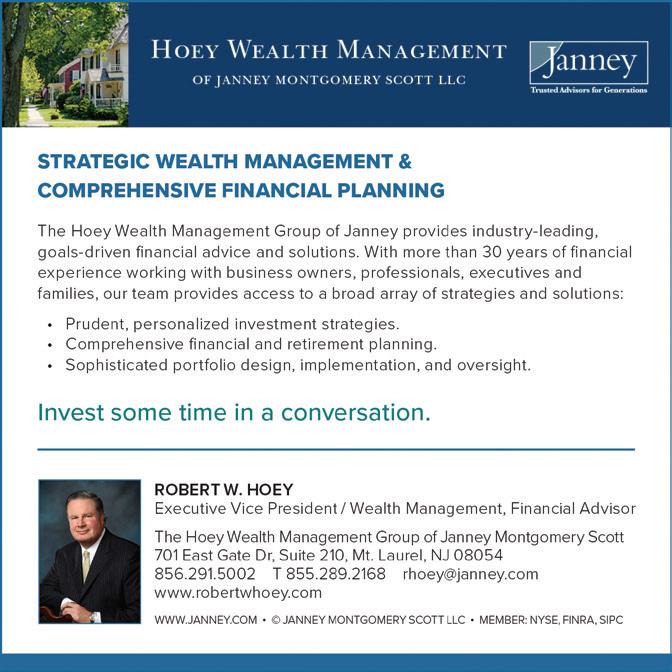


NAVIGATING the cigar world can be overwhelming, even for veteran smokers. Here are a few tips to help cigar hobbyists, of all kinds, find a cigar they enjoy.
Most cigar smokers know that the darker the cigar, the stronger it is. While this conventional wisdom will guide you initially, there are exceptions to this rule. If you find yourself not quite satisfied by a light Connecticut wrapper, it might be because these cigars are naturally bitter. Light cigars tend to have less flavor but are more bitter due to their shorter fermentation. Less fermentation means less sugar. These cigars lack the depth and sweetness of their darker, more fermented counterparts. If you want to avoid spice but maintain a naturally sweet cigar, try a mild Maduro, particularly those from the Dominican Republic. You’ll get a smooth experience, without the overwhelming strength.
On the other hand, if you are excited about spice and want to try something different, try cigars from a new region. Cigar tobacco is grown in many regions including Esteli, Nicaragua; Honduras; San Andres (an island that is part of Columbia in the Caribbean); Jalapa, Guatemala; Cameroon; Ometepe (a Nicaraguan island in Lake Nicaragua); Brazil; and Pennsylvania; and they all have unique profiles common to their region.
Once you find a cigar you enjoy, don’t stop there. I know you think you’ve found your new favorite, but there’s always something better around the corner. Explore cigars with similar profiles. If you enjoy one cigar out of a line, try the rest in the series. Size and shape can influence a cigar’s flavor profile as much as its distribution of tobaccos.
Many people are concerned with which drink is best paired with which cigars. There is really only one answer to that question. Always pair your cigar with your favorite drink. If your cigar does not taste its best when you have your favorite beverage beside it, it is not your favorite cigar.
The same rule applies to people. The only thing that can ruin a good cigar is bad company.
When in doubt, ask for advice from staff at a cigar shop. Their knowledge can guide you toward cigars that match your taste and help you learn more about your personal profile.
Embracing these guidelines can lead you to new discoveries on your cigar journey. As always, these are just guidelines. Curiosity and willingness to explore will always be your greatest companion. n








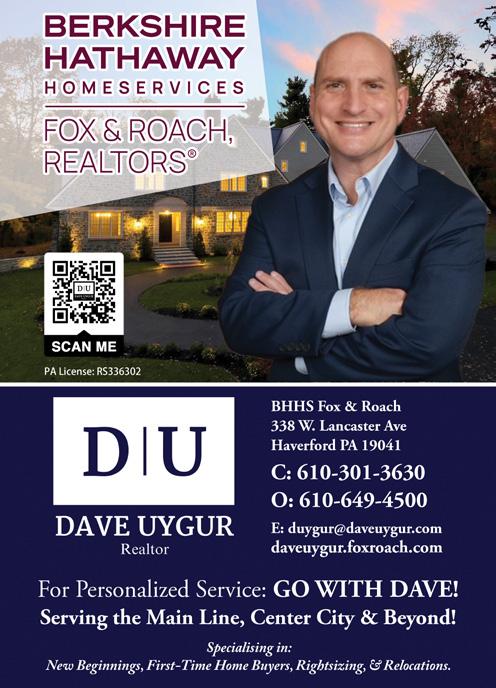











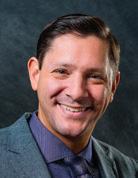
Have any tech ideas you want to talk about? Feel free to reach out to me on Twitter (@PCS_AnthonyM) or email me any time at Anthony@helpmepcs.com.
IN RECENT YEARS, the world of finance has witnessed a revolutionary phenomenon: cryptocurrency. These digital currencies have garnered attention from investors, tech enthusiasts, and even governments. But what exactly are they, and how do they work? Let’s embark on a journey to demystify cryptocurrency, exploring popular options like Bitcoin, Litecoin, Ethereum, and Chainlink.
Bitcoin, often dubbed the “king of cryptocurrencies,” was the first decentralized digital currency introduced by an unknown person or group under the pseudonym Satoshi Nakamoto in 2009. Unlike traditional currencies controlled by governments or financial institutions, Bitcoin operates on a decentralized network called the blockchain.

Imagine the blockchain as a public ledger containing a record of all Bitcoin transactions. These transactions are verified by a network of computers (miners) and stored in blocks, hence the name blockchain. One of Bitcoin’s primary use cases is peer-to-peer transactions without the need for intermediaries like banks. It allows users to send and receive payments globally with relative speed and low fees compared to traditional methods.
Litecoin, created by Charlie Lee in 2011, is often referred to as the “silver to Bitcoin’s gold.” It shares many similarities with Bitcoin but differs in some key aspects. Litecoin’s blockchain generates blocks more frequently, facilitating faster transaction confirmation times.
Litecoin aims to improve upon Bitcoin’s shortcomings, offering a more scalable and efficient payment system. Its use cases include everyday transactions, micropayments, and remittances. Many merchants and online retailers accept Litecoin as a form of payment alongside Bitcoin.
Ethereum, introduced by Vitalik Buterin in 2015, revolutionized the cryptocurrency landscape by introducing smart contracts. While Bitcoin primarily serves as digital money, Ethereum is a decentralized
platform that enables developers to build and deploy smart contracts and decentralized applications (DApps).
Smart contracts are self-executing contracts with predefined rules written in code. They automatically enforce and execute transactions when specific conditions are met, eliminating the need for intermediaries. Ethereum’s native currency, Ether (ETH), fuels these transactions and serves as a means of payment for utilizing the platform’s resources.
Ethereum’s versatility has led to a wide range of use cases beyond simple peer-to-peer transactions. It powers decentralized finance (DeFi) platforms, non-fungible tokens (NFTs), decentralized exchanges (DEXs), and more, fostering innovation in various industries.
Chainlink, founded by Sergey Nazarov and Steve Ellis in 2017, addresses a crucial limitation of smart contracts: their inability to access real-world data. While Ethereum’s smart contracts enable automated transactions, they rely on external data sources to trigger actions based on real-world events.
Chainlink acts as a decentralized oracle network that connects smart contracts with external data sources in a secure and reliable manner. It ensures the integrity and accuracy of data by aggregating information from multiple sources and delivering it to smart contracts.
Chainlink’s use cases span across industries such as decentralized finance, insurance, gaming, and supply chain management. It enables smart contracts to interact with real-world events, such as weather conditions, market prices, and sports outcomes, unlocking new possibilities for automation and innovation.
It’s important to note that investing in cryptocurrency carries inherent risks, and the market can be highly volatile. The information provided in this article is for educational purposes only and should not be construed as financial advice. Before making any investment decisions, it’s advisable to conduct thorough research and consult with a financial advisor.
In conclusion, cryptocurrency represents a paradigm shift in how we perceive and interact with money and technology. Bitcoin, Litecoin, Ethereum, and Chainlink are just a few examples of the diverse ecosystem of digital currencies, each with its unique features and use cases. As the world continues to embrace the digital revolution, understanding these cryptocurrencies becomes increasingly vital for both investors and enthusiasts alike. n

